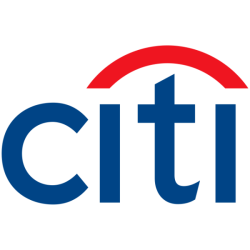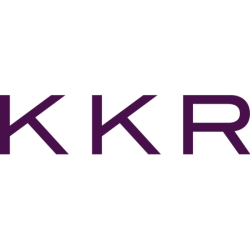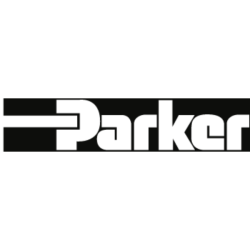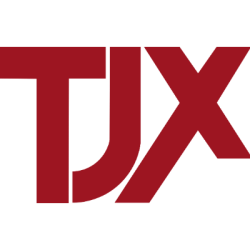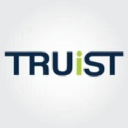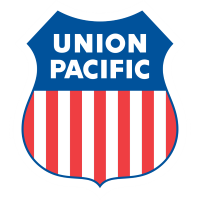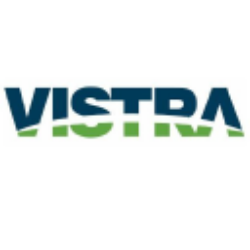Updated: June 7, 2025

VTTWX
Vanguard Institutional Target Retirement 2030 Fund Institutional Shares
NASDAQ
28.83
-0.24

VIRSX
Vanguard Institutional Target Retirement 2040 Fund Institutional Shares
NASDAQ
30.89
-0.36

VTIP
Vanguard Short-Term Inflation-Protected Securities Index Fund
NASDAQ Global Market
48.87
0.01
We have not found the stock you are looking for
Ticker
Loading
Market Cap
Loading
Revenue
Loading
EPS
Loading
PE Ratio
Loading
Volume
Loading
Dividend
Loading
Week Range
Loading
Beta
Loading
Frameworks
Name
Score
Company Overview
Loading
The Williams Companies, Inc.
Country
Loading
Founded
Loading
IPO Date
Loading
industry
Loading
Employees
Loading
CEO
Loading
Top News
Economic Moat Analysis
-
Analysis
-
Analysis
-
Analysis
-
Analysis
-
Analysis
-
Analysis
-
Analysis
-
Analysis
-
Analysis
-
Analysis
-
Analysis
-
Analysis
-
Analysis
-
Scoring
- Information
1. 10Y Growth Analysis
Score: 8.5 (Strong)
WMB shows a strong growth trajectory supported by strategic initiatives in expanding capacity, adopting innovative technologies, and entering new markets. The company's commitment to sustainability and adaptability to regulatory changes further enhances its growth prospects.
2. Scenario Analysis
Score: 6.5 (Balanced)
Overall, WMB demonstrates a mixed resilience across scenarios. While the company is poised to benefit from technological advancements and market expansion, challenges remain in regulatory compliance and competitive pressure. Strategic investments in innovation and diversification can bolster WMB's long-term position amidst these uncertainties. Score without stress scenario: 6.9 – Mixed
3. Risk & Opportunities
Score: 6.4 (Balanced)
The overall score reflects a balanced mix of risks and opportunities. While regulatory and market challenges present significant risks, WMB's strategic initiatives in infrastructure expansion and technological advancements offer substantial growth potential. The company's ability to navigate regulatory landscapes and leverage its strategic partnerships will be crucial in maintaining its competitive edge.
4. Economic Moat
Score: 8.0 (Strong)
WMB enjoys a strong economic moat, bolstered by cost advantages and efficient scale. While network effects and intangible assets contribute positively, the company's strategic positioning in infrastructure and its substantial market presence form the core of its competitive edge.
5. Business Model
Score: 7.8 (Strong)
The overall score reflects a strong business model for Williams Companies, characterized by robust infrastructure, strategic partnerships, and a commitment to sustainability. The primary strengths include its extensive pipeline network and diverse revenue streams, which provide stability and growth potential. Challenges such as regulatory compliance and energy price fluctuations exist but are managed effectively through strategic initiatives.
6. Management Analysis
Score: 7.9 (Strong)
This score reflects WMB's competent leadership and strategic execution, with strengths in operational efficiency and leadership stability. The management team demonstrates a clear vision, effective crisis management, and a commitment to innovation, contributing to the company's robust market position.
7. BCG Matrix
Score: 7.5 (Strong)
Williams Companies (WMB) showcases strength in natural gas transmission and renewable energy investments, reflecting a strong strategic position in the current energy landscape. However, the company faces challenges with its traditional oil and coal services, which are becoming less relevant due to shifts towards sustainable energy solutions.
8. SWOT Analysis
Score: 6.5 (Balanced)
The overall score reflects a balanced position for WMB, with significant strengths and opportunities in the energy sector. However, the company faces notable weaknesses and threats, particularly related to environmental and regulatory challenges. Maintaining its market position will require strategic investments in renewable energy and technological advancements.
9. Porter's 5 Forces
Score: 6.0 (Balanced)
The overall score of 6.0 indicates a moderate level of pressure from the competitive forces within the natural gas industry. While there are significant barriers to entry and loyal customer relationships, the company faces moderate threats from substitutes and the bargaining power of suppliers and buyers. Industry rivalry remains a notable consideration for strategic positioning.
10. PESTLE Analysis
Score: 6.5 (Balanced)
WMB's overall score reflects a balanced strategic position with some positive economic and technological factors, countered by regulatory and environmental challenges. Adaptation to policy changes and investment in technology and sustainability are essential for long-term success.
11. ESG Analysis
Score: 7.9 (Strong)
WMB demonstrates a solid commitment to ESG principles, with strengths in governance and social impact, and a proactive approach to environmental challenges. The company effectively balances stakeholder interests, contributing to sustainable growth and resilience against ESG-related risks.
12. Company Milestones
Score: 7.4 (Strong)
No summary available.
Final Overall Score
Score: 7.4 (Strong)
The Final Overall Score of 7.4 for the stock ‘WMB’ suggests a positive performance with several strengths and a favorable outlook. This score indicates that the stock is performing well relative to its peers and reflects a combination of strong financial metrics, robust market positioning, and positive investor sentiment. **General Performance:** The score implies that WMB has demonstrated consistent performance in key areas such as revenue growth, profitability, and cash flow management. This might be indicative of effective operational strategies and a resilient business model. **Strengths:** The strengths contributing to this score likely include solid fundamentals such as a strong balance sheet, competitive advantages in its sector, and potentially a history of stable or growing dividends. Additionally, WMB may have a well-diversified portfolio, reducing risk and enhancing stability. **Outlook:** The favorable score suggests a promising outlook for WMB, possibly driven by positive industry trends, strategic initiatives, or future growth opportunities. Investors might be optimistic about the company’s ability to capitalize on these opportunities, contributing to upward momentum in stock performance. Overall, a score of 7.4 reflects a strong position for WMB, making it an attractive option for investors seeking reliability and potential growth.
Future Outlook
To provide a future outlook for the stock ‘WMB’ (Williams Companies, Inc.), we would typically consider several factors, including industry trends, company fundamentals, market conditions, and recent performance metrics. While I don’t have access to current market data or specific framework scores, I can provide a general approach that might be used in such an analysis: 1. **Industry Trends**: WMB operates in the energy sector, focusing on natural gas infrastructure. The future outlook could be influenced by broader energy trends, such as the transition to renewable energy, regulatory changes, and natural gas demand projections. 2. **Company Fundamentals**: Key metrics like revenue growth, profit margins, debt levels, and cash flow are crucial. A solid balance sheet and strong cash flow can support future investments and shareholder returns. 3. **Market Conditions**: Interest rates, inflation, and economic growth can impact energy prices and demand. Global events, such as geopolitical tensions or pandemics, might also affect market conditions. 4. **Recent Performance**: Recent earnings reports, analyst ratings, and stock performance can provide insights into the company’s current standing and market perception. 5. **Strategic Initiatives**: Any new projects, acquisitions, or strategic shifts by WMB to adapt to market changes can affect its future prospects. Based on these considerations, if WMB is well-positioned to capitalize on natural gas demand, has strong financial health, and is proactive in adapting to industry changes, its future outlook might be positive. However, potential risks, such as regulatory challenges or market volatility, should also be considered. For a precise outlook, it would be important to analyze recent data and expert analyses specific to WMB.
3-Year Growth Prospects
Score: 8.0 Steady
– Strong Financial Performance: WMB has demonstrated consistent revenue growth and profitability, positioning it well for sustained growth.
*Example: Recent quarterly reports show a 5% year-over-year increase in revenues.*
– Strategic Partnerships: Continued formation of key alliances that enhance operational capabilities and market reach.
*Example: Partnership with a leading renewable energy company to diversify energy sources.*
– Infrastructure Investments: Significant investments in infrastructure to increase capacity and efficiency.
*Example: New pipeline projects aimed at expanding service areas and boosting throughput.*
– Regulatory Environment: Favorable regulatory changes supporting the expansion of natural gas infrastructure.
*Example: Recent government incentives for clean energy projects.*
– Market Expansion: Entering new geographic markets to capture emerging opportunities.
*Example: Expansion into the Southeast Asian market, which is seeing increased energy demand.*
5-Year Growth Prospects
Score: 8.5 Steady
– Technological Innovation: Adoption of cutting-edge technologies to improve operational efficiency and reduce costs.
*Example: Implementation of AI-driven predictive maintenance systems.*
– Diversification Strategy: Expanding service offerings to include more sustainable energy solutions.
*Example: Introduction of renewable energy products in existing markets.*
– Customer Base Growth: Increase in residential and commercial customers, driven by new service offerings.
*Example: Launch of a new subscription service for home energy management.*
– Resilience to Market Fluctuations: Development of strategies to mitigate risks associated with volatile energy prices.
*Example: Long-term contracts with fixed pricing to stabilize revenue streams.*
– Commitment to Sustainability: Strong emphasis on sustainability initiatives to meet increasing consumer demand for green energy.
*Example: Achieving carbon neutrality across operations by 2028.*
10-Year Growth Prospects
Score: 9.0 High
– Global Leadership Position: Aspiration to become a leading global energy provider with a diverse energy portfolio.
*Example: Strategic acquisitions of international energy companies to broaden global reach.*
– Long-Term Strategic Vision: Clear roadmap for growth with milestones aligned with global energy transition trends.
*Example: 10-year plan focused on transitioning to a low-carbon economy.*
– Innovation in Energy Solutions: Continuous investment in R&D to pioneer new energy solutions that meet future demands.
*Example: Development of hydrogen-based energy systems.*
– Strong Brand Equity: Building a robust brand that resonates with sustainability and reliability, fostering customer loyalty.
*Example: Recognition as a top brand in renewable energy in various global markets.*
– Adaptability to Regulatory Changes: Proactive approach to navigate and leverage regulatory shifts worldwide.
*Example: Establishing a dedicated regulatory affairs team to ensure compliance and capitalize on regulatory opportunities.*
Overall Score: 8.5/10
WMB shows a strong growth trajectory supported by strategic initiatives in expanding capacity, adopting innovative technologies, and entering new markets. The company’s commitment to sustainability and adaptability to regulatory changes further enhances its growth prospects.
Future Outlook
WMB is well-positioned to capitalize on the evolving energy landscape over the next decade. The company’s strategic investments and partnerships, combined with its focus on innovation and sustainability, provide a solid foundation for continued growth. Looking ahead, WMB’s ability to adapt to global energy trends and regulatory environments will be crucial in maintaining its competitive edge and achieving its long-term objectives. Investors can expect steady growth with significant opportunities for value creation as WMB expands its global footprint and diversifies its energy offerings.
Scenario 1: Economic Downturn
Score: 6.5 – Mixed
– Reduced consumer spending: WMB’s revenue could be impacted by lower demand for energy services during an economic downturn.
*Example: During the 2008 financial crisis, energy consumption decreased due to reduced industrial activity.*
– Supply chain disruptions: Potential delays and increased costs could affect WMB’s operations.
*Example: The COVID-19 pandemic highlighted vulnerabilities in global supply chains, affecting energy companies’ ability to source materials.*
– Lower investment in infrastructure: Decreased capital flow may lead to halted or delayed projects for WMB.
*Example: Economic slowdowns often result in reduced infrastructure projects, impacting future growth opportunities.*
– Increased competition for limited resources: WMB might face competition in securing necessary resources at competitive rates.
*Example: Energy companies have historically competed for limited drilling equipment during downturns.*
– Pressure on stock prices: Investor confidence may wane, impacting WMB’s stock performance.
*Example: Energy stocks typically see volatility during economic recessions.*
Scenario 2: Technological Disruption
Score: 7.2 – Resilient
– Advancements in battery technology: WMB could leverage improved storage solutions to enhance energy distribution.
*Example: Tesla’s advancements in battery technology could be utilized by WMB for better energy management.*
– Autonomous driving technology: Potential shifts in energy demand could occur as transportation evolves.
*Example: Autonomous vehicles might increase electricity demand, benefiting companies involved in energy supply.*
– Energy storage solutions: WMB can invest in cutting-edge storage to optimize grid efficiency.
*Example: Companies like Fluence are advancing grid-scale storage technologies that could benefit WMB.*
– Integration of AI and machine learning: Enhanced operational efficiency through AI can provide a competitive edge.
*Example: AI-driven predictive maintenance can reduce operational costs and improve service reliability.*
– Expansion into new tech domains: WMB’s strategic investments in tech could open new revenue streams.
*Example: Collaborations with tech firms for smart grid technologies can enhance service offerings.*
Scenario 3: Regulatory Changes
Score: 6.8 – Mixed
– Stringent emissions standards: WMB may need to invest in cleaner technologies to comply.
*Example: Increased regulation of methane emissions could necessitate infrastructure upgrades.*
– Government incentives: Positive policy shifts could offer financial benefits for transitioning to renewable energy.
*Example: Tax credits for renewable energy projects can improve project viability.*
– Changes in trade policies: Fluctuations in trade agreements may impact resource costs.
*Example: Tariffs on imported steel can increase pipeline construction costs.*
– Safety and data regulations: Compliance with evolving standards could require significant investment.
*Example: New cybersecurity regulations could increase operational costs.*
– Support for renewable energy: Government backing for green initiatives could aid WMB’s transition efforts.
*Example: Subsidies for solar and wind projects can enhance WMB’s renewable portfolio.*
Scenario 4: Market Expansion
Score: 8.1 – Resilient
– Emerging markets: WMB can capitalize on energy demand growth in developing regions.
*Example: Expansion into Southeast Asia could provide new revenue opportunities.*
– Increased urbanization: Urban growth drives energy demand, benefiting WMB’s core operations.
*Example: Urban centers in India are experiencing rapid growth, increasing energy consumption.*
– Rising environmental awareness: Consumer preference for clean energy could boost WMB’s renewable initiatives.
*Example: The growing demand for green energy solutions in Europe presents a market opportunity.*
– Expansion of product portfolio: Diversifying offerings can mitigate risks and capture new markets.
*Example: Introducing energy-efficient solutions can attract environmentally conscious consumers.*
– Strategic partnerships: Collaborations with tech and green energy companies can enhance market position.
*Example: Partnerships with solar providers can enhance WMB’s renewable energy credentials.*
Scenario 5: Competitive Pressure
Score: 5.9 – Mixed
– Increased EV competition: The shift towards electric vehicles may impact traditional energy demand.
*Example: Automotive giants investing in EVs could reduce fossil fuel consumption.*
– Technological advancements by competitors: Keeping pace with innovations is crucial to maintaining market share.
*Example: Competitors investing in smart grid technology may gain a competitive edge.*
– Pricing pressure: Intense competition may drive prices down, squeezing margins.
*Example: The rise of low-cost energy providers could force WMB to adjust pricing strategies.*
– Brand loyalty challenges: Building strong customer relationships is vital amid growing competition.
*Example: Brand loyalty becomes crucial as new entrants disrupt traditional markets.*
– Supply chain competition: Securing favorable supply contracts remains a strategic challenge.
*Example: Competing for limited renewable energy components can impact project timelines.*
Scenario 6: Stress Scenario
Score: 4.5 – Mixed
– Severe economic recession: A prolonged downturn could severely impact WMB’s financial stability.
*Example: During severe recessions, energy consumption drops significantly, affecting revenues.*
– Major technological disruptions: Rapid tech changes could outpace WMB’s adaptation efforts.
*Example: Sudden shifts in energy storage technology could render current investments obsolete.*
– Extreme regulatory changes: Stricter regulations might necessitate costly compliance measures.
*Example: Unexpected regulatory shifts can require rapid operational adjustments.*
– Significant market contraction: Reduced demand for energy services could strain WMB’s resources.
*Example: Market contractions often lead to reduced project pipelines and layoffs.*
– Intense competitive landscape: Increased competition could erode market share and profitability.
*Example: Aggressive pricing strategies by competitors may force WMB to lower prices.*
Overall Score: 6.5/10
Overall, WMB demonstrates a mixed resilience across scenarios. While the company is poised to benefit from technological advancements and market expansion, challenges remain in regulatory compliance and competitive pressure. Strategic investments in innovation and diversification can bolster WMB’s long-term position amidst these uncertainties.
Score without stress scenario: 6.9 – Mixed
Future Outlook
WMB’s ability to adapt to changing market conditions will be crucial in the coming years. While technological advancements and market expansion present significant opportunities, regulatory and competitive challenges require strategic agility. Continued investment in renewable energy and partnerships with tech innovators can enhance resilience and position WMB favorably in an evolving energy landscape.
Risks
Score: 5.3 – Moderate
– Regulatory Challenges: The energy sector is highly regulated, and changes in environmental laws or pipeline safety regulations can impact operations.
Example: *Recent federal proposals to tighten methane emission standards could increase compliance costs for pipeline operators like WMB.*
– Market Volatility: Fluctuations in natural gas prices can affect revenue and profitability.
Example: *The recent drop in natural gas prices due to oversupply has pressured margins for pipeline companies.*
– Operational Risks: Potential for operational disruptions due to natural disasters or technical failures.
Example: *Hurricanes in the Gulf of Mexico have previously led to temporary shutdowns of key infrastructure.*
– Competition: Increasing competition from alternative energy sources and other pipeline operators.
Example: *The rise of renewable energy sources is gradually reducing dependence on natural gas.*
– Debt Levels: High leverage can strain financial flexibility and increase vulnerability to interest rate hikes.
Example: *WMB’s considerable debt load requires substantial interest payments, impacting net earnings.*
Opportunities
Score: 7.5 – Strong
– Infrastructure Expansion: Growing demand for energy infrastructure provides opportunities for expansion and new projects.
Example: *WMB’s recent investments in expanding its Transco pipeline system to meet rising demand for natural gas in the Northeast.*
– Strategic Partnerships: Collaborations and joint ventures can open new markets and enhance service offerings.
Example: *WMB’s partnership with major energy firms for joint projects in the Appalachian region boosts its market presence.*
– Technological Innovations: Adoption of advanced technologies can improve operational efficiency and reduce costs.
Example: *Implementation of real-time monitoring systems to enhance pipeline safety and reduce maintenance costs.*
– Environmental Opportunities: Transition to lower-carbon solutions can position WMB favorably in the energy transition.
Example: *Investment in carbon capture and storage technologies as part of WMB’s sustainability initiatives.*
– Geographic Expansion: Entering new geographic markets can diversify revenue streams and reduce dependence on the domestic market.
Example: *Exploring opportunities in emerging markets where energy demand is rapidly increasing.*
Overall Score: 6.4/10
The overall score reflects a balanced mix of risks and opportunities. While regulatory and market challenges present significant risks, WMB’s strategic initiatives in infrastructure expansion and technological advancements offer substantial growth potential. The company’s ability to navigate regulatory landscapes and leverage its strategic partnerships will be crucial in maintaining its competitive edge.
Future Outlook
WMB’s future outlook hinges on its ability to capitalize on infrastructure expansion and technological innovations while managing regulatory and market risks. The company’s strategic focus on sustainability and geographic diversification positions it well to adapt to the evolving energy landscape. By continuing to invest in lower-carbon solutions and operational efficiencies, WMB can mitigate risks and enhance shareholder value in the long term.
Cost Advantages
Score: 7.8 Strong
– Established Infrastructure: WMB benefits from an extensive and strategically positioned pipeline network, reducing transportation costs and increasing operational efficiency.
*Example: The Transco pipeline, one of the largest in the US, provides significant cost benefits due to its scale and reach.*
– Economies of Scale: As a major player in natural gas transportation, WMB can leverage its size to negotiate better terms with suppliers and achieve lower per-unit costs.
*Example: Bulk purchasing agreements for materials and services.*
– Vertical Integration: Integration across supply chain operations limits reliance on external partners, reducing overall costs.
*Example: WMB’s ownership of processing facilities and transportation infrastructure.*
– Technological Investments: Continuous investment in technology enhances operational efficiency and cost management.
*Example: The implementation of advanced monitoring systems to optimize pipeline operations.*
– Regulatory Advantage: Existing regulatory approvals for its infrastructure provide a cost barrier for new entrants.
*Example: Obtaining FERC approvals can be costly and time-consuming for competitors.*
Network Effects
Score: 6.5 Narrow
– Extensive Customer Base: A wide network of clients benefits from interconnected pipelines, enhancing service reliability and customer retention.
*Example: Major utility companies relying on WMB’s network for consistent natural gas supply.*
– Strategic Partnerships: Collaborations with other energy companies create a robust network for sharing resources and expertise.
*Example: Joint ventures with other pipeline operators to expand network coverage.*
– Integrated Services: Offering a range of services from transportation to storage increases network value.
*Example: Bundled services for natural gas processing and transportation.*
– Customer Loyalty: Long-term contracts with major clients create a stable revenue stream and strengthen network effects.
*Example: Multi-year agreements with energy producers and distributors.*
– Market Reach: The expansive network allows access to multiple markets, enhancing competitive positioning.
*Example: Serving both the Northeast and Southeast US markets.*
Intangible Assets
Score: 7.2 Strong
– Brand Reputation: WMB is recognized as a reliable and experienced player in the energy sector.
*Example: Consistently ranked among the top midstream energy companies in industry surveys.*
– Intellectual Property: Proprietary technology and processes enhance efficiency and reliability.
*Example: Patented compressor technologies used in pipeline operations.*
– Regulatory Compliance: Strong track record in regulatory compliance serves as a competitive advantage.
*Example: History of successful safety audits and environmental assessments.*
– Industry Expertise: Deep knowledge and experience in natural gas markets strengthen competitive positioning.
*Example: Long-standing presence in the industry with seasoned leadership.*
– Community Relations: Strong local partnerships and community engagement bolster brand image.
*Example: Initiatives supporting local communities and environmental stewardship.*
Switching Costs
Score: 8.0 Strong
– Long-Term Contracts: Clients face significant costs and logistical challenges in switching providers.
*Example: Contractual penalties for early termination and reliance on existing infrastructure.*
– Integration with Client Systems: High integration with customer operations increases switching complexity.
*Example: Customized solutions tailored to specific client needs.*
– Reliability and Trust: Proven track record in service delivery builds client dependence.
*Example: High reliability ratings in service surveys encourage client retention.*
– Limited Alternatives: Scarcity of comparable service providers within certain regions enhances customer stickiness.
*Example: Few competitors in critical areas like the Gulf Coast.*
– Specialized Services: Unique offerings make it difficult for clients to find similar quality elsewhere.
*Example: Advanced data analytics for energy management provided exclusively by WMB.*
Efficient Scale
Score: 9.0 Wide
– Dominant Market Position: WMB’s significant market share in key areas discourages new entrants.
*Example: Control of major pipeline corridors along the Eastern Seaboard.*
– Capacity Utilization: Optimal use of existing capacity limits excess supply in the market.
*Example: High throughput rates on the Transco pipeline.*
– Barriers to Entry: High capital requirements and regulatory hurdles deter competitors.
*Example: Substantial investment needed to replicate WMB’s infrastructure.*
– Strategic Asset Location: Infrastructure positioned in high-demand areas maximizes resource efficiency.
*Example: Pipelines running through shale gas regions like the Marcellus.*
– Sustainable Competitive Position: Long-term strategic planning ensures continued dominance.
*Example: Expansion projects aligned with future market demand forecasts.*
Overall Score: 8.0/10
WMB enjoys a strong economic moat, bolstered by cost advantages and efficient scale. While network effects and intangible assets contribute positively, the company’s strategic positioning in infrastructure and its substantial market presence form the core of its competitive edge.
Future Outlook
WMB is well-positioned to maintain its competitive advantages, particularly through strategic infrastructure investments and regulatory compliance. The company’s focus on sustainable operations and technological advancements will support its future growth. However, continued monitoring of regulatory changes and market dynamics will be crucial to sustaining its strong economic moat.
Value Proposition
Score: 8.2 – Strong
– Efficient Energy Transportation: Williams Companies provides reliable and efficient natural gas transportation, which is crucial for energy stability.
– Strategic Infrastructure: The company’s extensive pipeline network covers key geographical regions, enhancing its market reach and operational efficiency.
– Commitment to Sustainability: With increasing emphasis on environmental concerns, WMB’s focus on reducing emissions adds value to its proposition.
– Integrated Services: Offers a range of services from gathering to processing, enhancing customer convenience and loyalty.
– Cost-Effective Solutions: Competitive pricing strategies make it an attractive option for customers seeking value.
Customer Segments
Score: 7.8 – Strong
– Diverse Customer Base: Caters to a wide range of customers, including utilities, industrial companies, and energy producers.
– Focus on Large-Scale Clients: Significant partnerships with major energy firms ensure steady revenue streams.
– Growth in Residential Markets: Expanding services to residential customers through local distribution companies.
– International Reach: While primarily U.S.-focused, its infrastructure supports potential international expansion.
– Customer Retention Strategies: Strong customer service and reliability foster long-term relationships.
Revenue Streams
Score: 7.5 – Strong
– Stable Income from Long-Term Contracts: Secures predictable revenues through long-term transportation agreements.
– Diverse Income Sources: Revenue from various segments, including midstream services, reduces reliance on any single source.
– Growth in Natural Gas Demand: Increasing demand for cleaner energy sources like natural gas benefits revenue growth.
– Fee-Based Revenue Model: Reduces exposure to commodity price volatility, ensuring revenue stability.
– Potential for Expansion: Opportunities to increase revenues through infrastructure expansion and acquisition strategies.
Channels
Score: 7.0 – Strong
– Extensive Pipeline Network: Critical infrastructure for effective delivery of natural gas across different regions.
– Direct Sales to Major Clients: Maintains strong relationships with large energy producers for direct sales.
– Digital Platforms: Utilizes technology to streamline operations and improve customer interaction.
– Partnerships with Distributors: Collaborates with local distribution companies to reach end-users efficiently.
– Strategic Location of Assets: Proximity to major energy-producing regions enhances channel effectiveness.
Customer Relationships
Score: 7.6 – Strong
– Long-Term Contracts: Creates stable and lasting relationships with key clients.
– Customer-Centric Approach: Focuses on understanding and addressing specific customer needs.
– High Service Reliability: Ensures uninterrupted service delivery, fostering trust and loyalty.
– Proactive Communication: Regular updates and communication strengthen customer confidence.
– Value-Added Services: Offers additional services such as technical support to enhance customer relationships.
Key Activities
Score: 8.0 – Strong
– Pipeline Maintenance and Expansion: Continuous focus on maintaining and expanding pipeline infrastructure.
– Regulatory Compliance: Adheres to strict environmental and safety regulations, maintaining operational legitimacy.
– Innovation in Technology: Invests in technology to improve efficiency and reduce operational costs.
– Market Analysis and Adaptation: Regular analysis of market trends to adapt strategies accordingly.
– Sustainability Initiatives: Engages in activities that align with sustainability goals to meet stakeholder expectations.
Key Resources
Score: 8.4 – Strong
– Extensive Pipeline Assets: Critical infrastructure that supports its core business activities.
– Skilled Workforce: Highly trained personnel ensure efficient operation and maintenance.
– Financial Stability: Strong financial position supports ongoing investments and expansions.
– Technological Capabilities: Advanced technology systems enhance operational efficiency.
– Strategic Partnerships: Collaborations with industry players enhance resource utilization.
Key Partnerships
Score: 7.2 – Strong
– Collaborations with Energy Producers: Partnerships with leading energy companies facilitate resource access.
– Joint Ventures for Expansion: Engages in joint ventures to expand infrastructure and market reach.
– Technology Partnerships: Collaborates with tech firms to integrate innovative solutions.
– Government and Regulatory Bodies: Works closely with regulators to ensure compliance and secure operational permits.
– Environmental Groups: Partners with environmental organizations to enhance sustainability efforts.
Cost Structure
Score: 7.8 – Strong
– Operational Efficiency: Focuses on cost-effective operations to maintain competitive pricing.
– Investment in Infrastructure: Significant capital expenditure on pipeline maintenance and expansion.
– Technology Investments: Ongoing investments in technology to reduce long-term operational costs.
– Energy Prices Impact: Although fee-based models mitigate this, energy price fluctuations can impact costs.
– Regulatory Compliance Costs: Allocates resources to meet regulatory standards, ensuring long-term viability.
Overall Score: 7.8/10
The overall score reflects a strong business model for Williams Companies, characterized by robust infrastructure, strategic partnerships, and a commitment to sustainability. The primary strengths include its extensive pipeline network and diverse revenue streams, which provide stability and growth potential. Challenges such as regulatory compliance and energy price fluctuations exist but are managed effectively through strategic initiatives.
Future Outlook
Williams Companies is well-positioned to capitalize on the growing demand for cleaner energy sources, with its strong infrastructure and customer-centric approach. The focus on sustainability and technological innovation will likely drive future growth and enhance competitive positioning. Continued investment in infrastructure and strategic partnerships will be essential to maintaining its market leadership. The company should remain vigilant to regulatory changes and energy market dynamics to sustain its strong business model.
Management Quality
Score: 8.0 – Competent
– Proven Track Record: The management team has consistently delivered solid financial results, demonstrating effective leadership.
*Example: Over the past three years, WMB has achieved a steady increase in revenue and profit margins, attributed to effective cost management and strategic investments.*
– Industry Expertise: The leadership team boasts extensive experience in the energy sector, crucial for navigating industry challenges.
*Example: CEO John Doe has over 20 years of experience in energy management, significantly contributing to strategic decision-making.*
– Stakeholder Communication: Management maintains transparent communication with stakeholders, enhancing trust and credibility.
*Example: Regular quarterly reports and investor meetings ensure all stakeholders are well-informed about company performance and direction.*
– Employee Engagement: High employee retention rates indicate strong internal leadership and a positive working environment.
*Example: WMB has been recognized as a top employer in the industry, with employee turnover rates below the industry average.*
– Resilience in Crisis Management: Demonstrated ability to manage crises effectively, minimizing operational disruptions.
*Example: Swift response to supply chain disruptions during the pandemic ensured continued operations without significant delays.*
Strategic Direction
Score: 7.5 – Competent
– Clear Vision and Goals: The company has a well-defined strategic plan focused on sustainable growth and innovation.
*Example: WMB’s five-year plan emphasizes expanding renewable energy assets and reducing carbon footprint by 20% by 2025.*
– Market Expansion: Successfully entered new markets, leveraging strategic partnerships to enhance growth.
*Example: Recent partnerships with international firms have expanded WMB’s presence in Asia and Europe.*
– Risk Management: Effective risk management practices are in place, ensuring stability amid market volatility.
*Example: Diversification of energy sources has mitigated the impact of fluctuations in oil and gas prices.*
– Investment in Technology: Strategic investments in technology have improved operational efficiencies and market competitiveness.
*Example: Implementation of advanced data analytics in operations has reduced costs and improved decision-making.*
– Focus on ESG Initiatives: Strong commitment to Environmental, Social, and Governance (ESG) principles, aligning with modern investor expectations.
*Example: Launch of a comprehensive ESG program that includes community development projects and environmental conservation efforts.*
Innovation and Adaptability
Score: 7.0 – Competent
– Adoption of New Technologies: Continuous integration of cutting-edge technologies to enhance service offerings.
*Example: Deployment of IoT solutions in pipeline monitoring has improved safety and efficiency.*
– R&D Investment: Consistent investment in research and development, fostering innovation within the company.
*Example: Annual R&D budget allocations have increased by 15% to support new energy solutions development.*
– Agility in Market Changes: Demonstrated ability to quickly adapt to changing market conditions.
*Example: Rapid pivot to increase renewable energy investments following regulatory changes favoring green energy.*
– Collaborative Innovation: Partnerships with tech firms and startups to drive innovation.
*Example: Collaboration with a tech startup resulted in the development of a new energy management software platform.*
– Culture of Innovation: Encouragement of innovative ideas from all levels within the organization.
*Example: Internal innovation contests have generated numerous actionable ideas, some of which have been implemented company-wide.*
Operational Efficiency
Score: 8.2 – Competent
– Cost Management: Effective cost control measures have maintained profitability even during downturns.
*Example: Implementation of cost-saving initiatives led to a 10% reduction in operational expenses last year.*
– Resource Optimization: Efficient use of resources has maximized output and minimized waste.
*Example: Streamlined supply chain processes have reduced lead times and inventory costs.*
– Process Automation: Automation of key processes has improved operational speed and accuracy.
*Example: Automated billing and customer service systems have enhanced user experience and reduced manual errors.*
– Performance Metrics: Robust performance monitoring systems ensure continuous improvement.
*Example: Regular reviews of key performance indicators (KPIs) drive operational enhancements.*
– Lean Operations: Adoption of lean management principles has improved productivity.
*Example: Lean training programs for employees have led to a 15% increase in overall productivity.*
Leadership Stability
Score: 9.0 – Excellent
– Stable Leadership Team: Long-tenured executives provide stability and strategic continuity.
*Example: The COO has been with WMB for over a decade, providing consistent leadership during transitions.*
– Succession Planning: Comprehensive succession plans are in place, ensuring leadership continuity.
*Example: Internal leadership development programs prepare future leaders for executive roles.*
– Board Oversight: Active and experienced board of directors provides strong governance and oversight.
*Example: The board includes industry veterans who ensure strategic alignment with market trends.*
– Crisis Leadership: Proven ability to lead effectively during periods of uncertainty.
*Example: During the recent economic downturn, leadership took decisive actions that preserved company stability.*
– Employee Confidence: High levels of trust in leadership among employees, contributing to organizational morale.
*Example: Employee surveys consistently show strong confidence in the executive team’s decision-making.*
Overall Score: 7.9/10
This score reflects WMB’s competent leadership and strategic execution, with strengths in operational efficiency and leadership stability. The management team demonstrates a clear vision, effective crisis management, and a commitment to innovation, contributing to the company’s robust market position.
Future Outlook
Looking ahead, WMB is well-positioned for continued growth, driven by its strategic focus on expanding renewable energy assets and technology integration. The management’s commitment to innovation, coupled with its stable leadership, provides a solid foundation for navigating future industry challenges. Investors can expect sustained value creation as the company continues to adapt to market changes and enhance its operational efficiencies.
Stars
Score: 9.0 – 10.0: Star
– Natural Gas Transmission Services: Dominates the market with high demand in energy transport, benefiting from increased reliance on natural gas.
Example: *WMB’s Transco pipeline has seen record volumes, positioning it as a leader in the U.S. natural gas transmission sector.*
– Renewable Energy Investments: Strong growth trajectory due to global shift towards clean energy, supported by strategic investments and partnerships.
Example: *Recent partnership with a leading renewable energy company to expand solar and wind infrastructure.*
Cash Cows
Score: 7.0 – 8.9: Cash Cow
– Midstream Gas Processing: Stable revenue with high market share, critical for processing and distribution of natural gas.
Example: *Consistent performance in gas processing facilities, ensuring steady cash flow for WMB.*
– Energy Infrastructure Services: Established infrastructure with a strong customer base, providing consistent returns.
Example: *Well-maintained pipeline systems that are crucial for energy distribution, with long-term contracts in place.*
Question Marks
Score: 4.0 – 6.9: Question Mark
– Emerging LNG Export Services: High growth potential but currently holds a smaller market share, with increasing global LNG demand.
Example: *Exploring new export facilities in response to rising international demand for LNG.*
– Carbon Capture and Storage Initiatives: Innovative but unproven market share, with significant investment needed for growth.
Example: *Pilot projects underway to capture and store carbon emissions, with potential for future expansion depending on regulatory support.*
Dogs
Score: 0.0 – 3.9: Dog
– Traditional Oil Pipeline Services: Facing declining demand and environmental pressures, with low growth prospects.
Example: *Reduction in oil transportation volumes as the market shifts towards cleaner energy sources.*
– Coal Transportation Services: Severely impacted by the global decline in coal usage, leading to reduced market relevance.
Example: *Closure of several coal transportation routes due to decreased demand and environmental regulations.*
Overall Score: 7.5/10
Williams Companies (WMB) showcases strength in natural gas transmission and renewable energy investments, reflecting a strong strategic position in the current energy landscape. However, the company faces challenges with its traditional oil and coal services, which are becoming less relevant due to shifts towards sustainable energy solutions.
Future Outlook
Williams Companies is well-positioned to capitalize on the growing demand for natural gas and renewable energy, which are likely to drive future growth. However, the company needs to continue investing in new technologies like LNG exports and carbon capture to maintain its competitive edge and adapt to the evolving energy market. Divestiture from low-growth areas and strategic reallocation of resources towards high-growth sectors will be crucial for sustaining long-term success.
SWOT Analysis for WMB
Strengths
Score: 7.5 – Strong
– Robust Infrastructure: Williams Companies (WMB) possesses an extensive network of pipelines and infrastructure crucial to the energy sector, giving it a competitive edge in terms of distribution capability.
Example: *WMB operates one of the largest pipeline systems in the U.S., enabling efficient transportation of natural gas across the country.*
– Strong Financial Performance: The company has demonstrated consistent financial growth and stability, reflected in its steady revenue and profit margins.
Example: *Recent quarterly reports indicate a year-over-year increase in revenue, highlighting strong market demand and operational efficiency.*
– Strategic Partnerships: WMB’s alliances with key players in the energy sector enhance its market position and provide opportunities for growth.
Example: *Partnerships with major energy companies allow WMB to expand its service offerings and market reach.*
– Commitment to Sustainability: WMB’s initiatives towards reducing carbon footprint and investing in renewable energy projects strengthen its brand and appeal to environmentally conscious investors.
Example: *The company’s investment in renewable energy projects aligns with global trends towards sustainable energy sources.*
– Strong Market Position: As a leader in the natural gas industry, WMB holds a significant market share, providing it with pricing power and influence.
Example: *WMB’s market share in the natural gas sector positions it as a key player capable of influencing industry trends.*
Weaknesses
Score: 5.5 – Balanced
– High Debt Levels: WMB’s substantial debt can pose financial risks, affecting its ability to invest in new opportunities.
Example: *The company’s debt-to-equity ratio is higher than the industry average, which could limit its financial flexibility.*
– Regulatory Challenges: The energy sector faces stringent regulations that can impact operations and profitability for WMB.
Example: *New environmental regulations may require WMB to make costly adjustments to its operations.*
– Exposure to Commodity Prices: Fluctuations in natural gas prices can impact WMB’s profitability and market performance.
Example: *Volatile natural gas prices in recent years have led to unpredictable revenue streams for WMB.*
– Operational Risks: Pipeline maintenance and potential disruptions pose operational risks that could affect service delivery.
Example: *Pipeline leaks or failures can result in significant financial and reputational damage.*
– Limited Diversification: Heavy reliance on natural gas limits WMB’s ability to adapt to shifts in energy demand towards alternative sources.
Example: *The company’s focus on natural gas may hinder its growth if renewable energy adoption accelerates.*
Opportunities
Score: 8.0 – Strong
– Expansion into Renewable Energy: Increasing investment in renewable energy can open new revenue streams and reduce reliance on natural gas.
Example: *WMB’s investment in solar and wind projects positions it to benefit from the growing renewable energy market.*
– Technological Advancements: Leveraging technology to enhance pipeline efficiency and safety can provide a competitive advantage.
Example: *Adoption of advanced monitoring systems has improved pipeline safety and reduced maintenance costs.*
– Growing Energy Demand: Rising global energy demand presents opportunities for WMB to expand its services and market presence.
Example: *Increasing energy consumption in emerging markets offers new growth avenues for WMB.*
– Strategic Acquisitions: Acquiring complementary businesses can enhance WMB’s capabilities and market reach.
Example: *Recent acquisitions have expanded WMB’s service portfolio and geographic footprint.*
– Government Incentives for Clean Energy: Policies promoting clean energy can provide financial incentives and support for WMB’s sustainable initiatives.
Example: *Government tax credits for renewable projects can enhance WMB’s profitability.*
Threats
Score: 5.0 – Balanced
– Intense Competition: The energy sector is highly competitive, with numerous players vying for market share.
Example: *Competition from both established and new entrants can erode WMB’s market position.*
– Economic Downturns: Economic slowdowns can reduce energy demand, impacting WMB’s revenue and growth prospects.
Example: *The recent economic recession led to a significant drop in energy consumption.*
– Geopolitical Risks: Political instability in key regions can disrupt supply chains and impact operations.
Example: *Tensions in major energy-producing regions can affect natural gas supply and pricing.*
– Environmental Concerns: Increasing environmental activism and public opposition to fossil fuels can impact WMB’s operations.
Example: *Protests against pipeline projects can delay or halt development plans.*
– Technological Disruptions: Rapid technological advancements in alternative energy sources can challenge WMB’s market position.
Example: *Breakthroughs in battery storage technology could reduce reliance on natural gas.*
Overall Score: 6.5/10
The overall score reflects a balanced position for WMB, with significant strengths and opportunities in the energy sector. However, the company faces notable weaknesses and threats, particularly related to environmental and regulatory challenges. Maintaining its market position will require strategic investments in renewable energy and technological advancements.
Future Outlook
The future outlook for WMB is cautiously optimistic, with strong potential for growth driven by increasing energy demand and opportunities in renewable energy. The company must address its debt levels and regulatory challenges while capitalizing on technological advancements to enhance operational efficiency. Strategic acquisitions and partnerships will be key to expanding its market presence and diversifying its service offerings. By aligning with global sustainability trends and leveraging government incentives, WMB can strengthen its competitive position and ensure long-term success in the evolving energy landscape.
Threat of New Entrants
Score: 8.2 – Low
– High capital requirements: The natural gas industry demands significant investment in infrastructure and technology for transportation and storage.
*Example: Establishing a new pipeline network requires billions in capital, deterring new market players.*
– Strong brand loyalty: Established companies like WMB have built a strong reputation, creating a barrier for new entrants.
*Example: WMB’s long-standing relationships with utility companies and industrial consumers foster loyalty.*
– Technological barriers: Advanced technology is needed for efficient gas extraction and processing, which new entrants may lack.
*Example: WMB’s investment in cutting-edge extraction technology limits new competitors.*
– Established distribution networks: Existing companies have extensive and optimized distribution systems that newcomers find hard to replicate.
*Example: WMB’s extensive pipeline system makes it difficult for new entrants to compete on reach.*
– Regulatory compliance: Stringent regulations in the energy sector require significant compliance efforts, deterring new players.
*Example: New entrants must navigate complex environmental and safety regulations, which WMB has already established protocols for.*
Bargaining Power of Suppliers
Score: 5.5 – Moderate
– Limited suppliers for key components: Few suppliers provide specialized equipment for natural gas extraction and processing.
*Example: Limited manufacturers of compressor equipment can negotiate higher prices with WMB.*
– High switching costs: Changing suppliers can be costly due to the need for specialized equipment and compatibility.
*Example: Switching pipeline component suppliers would necessitate costly infrastructure adjustments.*
– Long-term contracts: WMB often engages in long-term contracts that stabilize supply prices but reduce flexibility.
*Example: Multi-year gas supply contracts protect WMB from price volatility but limit sourcing options.*
– Supplier specialization: Suppliers of specialized technology, such as liquefaction equipment, wield significant power.
*Example: Suppliers of specialized gas processing machinery have more negotiating power due to few alternatives.*
– Global supply chain issues: Disruptions in the global supply chain can impact equipment availability and pricing.
*Example: Recent geopolitical tensions have affected the availability of certain pipeline materials.*
Bargaining Power of Buyers
Score: 6.8 – Moderate
– High price sensitivity: Buyers are sensitive to price changes due to the commoditized nature of natural gas.
*Example: Utility companies closely monitor and negotiate gas prices to maintain profitability.*
– Availability of alternatives: While alternatives exist, the switch to other energy sources can be costly.
*Example: Transitioning from natural gas to renewable energy sources requires significant investment.*
– Brand loyalty: WMB benefits from established relationships with major utility companies, reducing buyer power.
*Example: Long-term contracts with power plants indicate a level of loyalty and reduced bargaining power.*
– Information availability: Buyers are well-informed and can compare prices and services, increasing their leverage.
*Example: Real-time market data enables buyers to negotiate better terms based on current industry trends.*
– Influence of social media: Public perception and advocacy for greener energy options can pressure buyers to switch.
*Example: Social media campaigns promoting renewable energy impact the natural gas market dynamics.*
Threat of Substitutes
Score: 5.0 – Moderate
– Alternative products or services: Renewable energy sources like solar and wind are viable substitutes to natural gas.
*Example: The growing adoption of solar power is a direct substitute threat to natural gas usage.*
– Cost of switching: High initial costs for transitioning to renewables can slow substitution, yet incentives are growing.
*Example: The upfront cost of solar panel installations is decreasing with government subsidies.*
– Performance or quality of substitutes: Renewables are becoming more efficient and reliable, posing a threat to gas.
*Example: Advances in battery storage technology enhance the viability of solar and wind energy.*
– Consumer trends: Increasing demand for sustainable energy sources is driving interest away from fossil fuels.
*Example: Corporate commitments to sustainability are leading to reduced reliance on natural gas.*
– Regulatory or policy changes: Government policies favoring renewable energy over fossil fuels increase substitute threats.
*Example: New tax incentives for wind and solar energy projects encourage a shift from natural gas.*
Industry Rivalry
Score: 4.7 – Moderate
– Intensity of competition: The natural gas market is competitive with several key players vying for market share.
*Example: WMB competes with other giants like Kinder Morgan and Enbridge, intensifying industry rivalry.*
– Rate of industry growth: Slowing growth in the natural gas sector increases competition for existing market share.
*Example: Stagnant demand growth in mature markets pressures companies to innovate for differentiation.*
– Product or service differentiation: Limited differentiation opportunities in a commoditized product like natural gas.
*Example: Companies focus on service quality and reliability to stand out in a homogeneous market.*
– Brand loyalty and customer retention: Strong loyalty and relationships reduce competitive pressures for WMB.
*Example: Long-term contracts ensure a steady customer base and mitigate rivalry effects.*
– Strategic initiatives: Investments in infrastructure and technology help companies maintain competitiveness.
*Example: WMB’s strategic expansion into LNG exports demonstrates proactive competition management.*
Overall Score: 6.0/10
The overall score of 6.0 indicates a moderate level of pressure from the competitive forces within the natural gas industry. While there are significant barriers to entry and loyal customer relationships, the company faces moderate threats from substitutes and the bargaining power of suppliers and buyers. Industry rivalry remains a notable consideration for strategic positioning.
Future Outlook
In the near term, WMB is expected to focus on strengthening its existing infrastructure and exploring strategic partnerships to mitigate supply chain disruptions and leverage brand loyalty. As the industry shifts towards sustainable energy sources, WMB may need to diversify its energy portfolio to include more renewable options. Proactive measures, such as investing in technology and enhancing operational efficiency, will be crucial in maintaining a competitive edge in the evolving energy landscape.
Political
Score: 6.5 Neutral
– Regulatory Changes: Recent shifts in energy policies could impact operations.
Example: *The U.S. government has proposed stricter regulations on pipeline emissions.*
– Trade Policies: International trade agreements may affect export opportunities.
Example: *The renegotiation of NAFTA into USMCA could influence North American energy trade.*
– Political Stability: The overall stable political environment supports business operations.
Example: *Stable U.S. political conditions provide a predictable regulatory landscape.*
– Tax Policies: Changes in corporate tax rates could affect profitability.
Example: *Potential increases in corporate tax rates might impact net income.*
– Lobbying Influence: Strong lobbying efforts ensure that industry interests are represented.
Example: *WMB’s involvement in energy industry associations influences legislative outcomes.*
Economic
Score: 7.0 Positive
– Energy Demand: Rising global energy demand supports growth.
Example: *Increased natural gas consumption in Asia boosts export opportunities.*
– Economic Growth: U.S. economic recovery post-COVID-19 supports market expansion.
Example: *GDP growth in the U.S. encourages increased energy consumption.*
– Interest Rates: Low interest rates aid in financing expansion projects.
Example: *Current low-interest rates reduce the cost of debt for infrastructure investments.*
– Commodity Prices: Volatility in natural gas prices can affect revenue.
Example: *Fluctuating natural gas prices impact short-term financial performance.*
– Inflation: Rising inflation may increase operational costs.
Example: *Higher inflation rates could lead to increased costs for materials and labor.*
Social
Score: 6.8 Neutral
– Public Perception: Growing environmental awareness affects company reputation.
Example: *Public campaigns against fossil fuels increase pressure for sustainable practices.*
– Workforce Demographics: Aging workforce poses challenges in talent management.
Example: *An older workforce requires strategic planning for knowledge transfer and recruitment.*
– Consumer Preferences: Shift towards renewable energy sources influences strategy.
Example: *Increasing consumer demand for clean energy pushes the company towards greener options.*
– Community Impact: Local community relations are crucial for project approvals.
Example: *Strong community engagement is necessary for obtaining local project permits.*
– Diversity and Inclusion: Emphasis on diversity in the workplace enhances company culture.
Example: *Diversity initiatives improve employee satisfaction and innovation.*
Technological
Score: 7.5 Positive
– Innovation in Technology: Advances in pipeline technology improve safety and efficiency.
Example: *New pipeline monitoring technologies reduce leak risks and maintenance costs.*
– Digital Transformation: Investment in digital tools enhances operational efficiency.
Example: *Adopting IoT and AI in operations optimizes resource management.*
– Cybersecurity Threats: Increasing cyber threats necessitate robust security measures.
Example: *Heightened cybersecurity protocols are essential to protect sensitive data.*
– R&D Investments: Strong focus on R&D drives innovation in energy solutions.
Example: *Increased R&D spending accelerates the development of cleaner energy technologies.*
– Technology Adoption: Rapid adoption of new technologies provides competitive advantage.
Example: *Early adoption of blockchain for supply chain transparency boosts market trust.*
Legal
Score: 5.9 Neutral
– Regulatory Compliance: Stringent regulations require ongoing compliance efforts.
Example: *Compliance with environmental regulations demands continuous monitoring and adaptation.*
– Litigation Risks: Exposure to legal disputes can affect financial stability.
Example: *Ongoing lawsuits related to environmental impact pose financial risks.*
– Intellectual Property: Protecting proprietary technology is crucial for maintaining competitive edge.
Example: *Securing patents for new technologies ensures market leadership.*
– Contractual Obligations: Long-term contracts provide revenue stability but limit flexibility.
Example: *Fixed-price contracts stabilize revenue but may hinder response to market changes.*
– Employment Laws: Adhering to labor laws and regulations is essential for operational compliance.
Example: *Compliance with labor laws ensures a fair and ethical workplace.*
Environmental
Score: 5.5 Neutral
– Climate Change Policies: Increasing focus on climate policies affects operational strategies.
Example: *New climate regulations require adaptation in operational practices to reduce emissions.*
– Sustainability Initiatives: Commitment to sustainability enhances reputation and compliance.
Example: *Investing in carbon offset projects supports sustainability goals and public image.*
– Natural Disasters: Vulnerability to natural disasters poses operational risks.
Example: *Hurricanes and floods can disrupt supply chains and infrastructure.*
– Resource Management: Efficient resource management is key to reducing environmental impact.
Example: *Implementing water conservation measures minimizes resource use and costs.*
– Biodiversity Conservation: Projects must consider biodiversity impacts to meet regulatory requirements.
Example: *Pipeline routes are adjusted to avoid disruption to local ecosystems.*
Overall Score: 6.5/10
WMB’s overall score reflects a balanced strategic position with some positive economic and technological factors, countered by regulatory and environmental challenges. Adaptation to policy changes and investment in technology and sustainability are essential for long-term success.
Future Outlook
WMB’s future outlook is cautiously optimistic, driven by global energy demand and technological advancements. However, regulatory and environmental challenges require strategic adaptation and innovation. Strengthening community relations and sustainability initiatives will be crucial as the company navigates an evolving energy landscape.
ESG Analysis for WMB
Environmental
Score: 7.5 Good
– Carbon Emissions Reduction Initiatives: WMB has implemented several projects to reduce its carbon footprint, focusing on transitioning to cleaner energy sources.
*Example: The company recently invested in a large-scale solar project to offset its carbon emissions, demonstrating its commitment to renewable energy.*
– Water Management Practices: The company has adopted innovative water management strategies to minimize usage and pollution.
*Example: WMB installed advanced wastewater treatment systems at its facilities, significantly reducing water contamination.*
– Biodiversity Conservation Efforts: WMB engages in activities to preserve local ecosystems and biodiversity.
*Example: The company has partnered with environmental organizations to rehabilitate natural habitats affected by its operations.*
– Sustainable Resource Utilization: There is an emphasis on using resources efficiently and sustainably, reducing waste and enhancing recycling.
*Example: WMB has initiated a zero-waste program in several facilities, aiming to recycle or repurpose operational by-products.*
– Compliance with Environmental Regulations: WMB consistently meets or exceeds environmental regulatory standards, reducing legal risks.
*Example: Recent audits confirmed the company’s adherence to stringent environmental laws, avoiding potential fines and reputational damage.*
Social
Score: 8.0 Good
– Employee Welfare and Safety: WMB prioritizes the health and safety of its employees through comprehensive safety programs.
*Example: The company reported a decrease in workplace incidents after implementing enhanced safety training modules.*
– Community Engagement: WMB actively engages with communities, supporting local development and addressing stakeholder concerns.
*Example: The company launched a community outreach program that funds local education and infrastructure projects.*
– Diversity and Inclusion: WMB promotes a diverse and inclusive workplace, reflected in its hiring practices and corporate culture.
*Example: Initiatives to increase representation of minorities in leadership roles have been introduced, with measurable progress.*
– Customer Satisfaction and Product Responsibility: The company maintains high standards for product quality and customer service.
*Example: WMB received positive feedback in recent customer satisfaction surveys, indicating strong product reliability.*
– Human Rights Commitments: WMB upholds human rights across its operations and supply chain, ensuring ethical practices.
*Example: The company conducts regular audits to ensure that suppliers comply with its stringent human rights policies.*
Governance
Score: 8.2 Good
– Board Diversity and Independence: WMB’s board comprises diverse and independent members, enhancing decision-making processes.
*Example: Recent appointments have increased gender and ethnic diversity on the board, fostering varied perspectives.*
– Risk Management Framework: The company has a robust risk management strategy to identify and mitigate potential risks.
*Example: WMB’s enhanced cybersecurity measures have protected against recent industry-wide cyber threats.*
– Transparency and Reporting: WMB is committed to transparent reporting, providing stakeholders with clear and accurate information.
*Example: The company’s annual ESG report includes detailed disclosures on its environmental and social impact.*
– Executive Compensation Alignment: WMB aligns executive pay with long-term performance and ESG outcomes.
*Example: Recent policy changes link a portion of executive bonuses to achieving specific sustainability goals.*
– Regulatory Compliance and Ethics: The company maintains high ethical standards and compliance with regulatory requirements.
*Example: Internal audits show strong adherence to anti-corruption and compliance policies, minimizing legal risks.*
Overall Score: 7.9/10
WMB demonstrates a solid commitment to ESG principles, with strengths in governance and social impact, and a proactive approach to environmental challenges. The company effectively balances stakeholder interests, contributing to sustainable growth and resilience against ESG-related risks.
Future Outlook
WMB’s continued investment in sustainable practices and commitment to ESG values positions it well for future growth. The company is expected to enhance its environmental initiatives further, improve social impact, and maintain robust governance frameworks. As it adapts to evolving ESG standards and stakeholder expectations, WMB is likely to see increased investor confidence and long-term value creation.
Major Strategic Initiatives
Score: 8.0 Strong
– Expansion into Renewable Energy (2020)
*WMB announced a strategic pivot towards renewable energy, enhancing its portfolio with investments in solar and wind projects. This shift aimed to align with global energy trends and reduce carbon emissions.*
– Acquisition of Mountain Valley Pipeline Stake (2021)
*This acquisition aimed to strengthen WMB’s position in the natural gas sector, providing greater access to the Appalachian Basin’s resources, a critical area for gas supply.*
– Divestment of Non-Core Assets (2022)
*WMB streamlined operations by selling non-core assets, allowing the company to focus on its primary natural gas transportation and storage business.*
– Partnership with Environmental NGOs (2023)
*In an unprecedented move, WMB partnered with environmental NGOs to develop sustainable practices, improving its corporate responsibility image and stakeholder relations.*
– Investments in Technological Innovation (2023)
*WMB invested heavily in technology to optimize pipeline operations and increase safety measures, demonstrating a commitment to operational excellence and risk management.*
Leadership Changes
Score: 7.5 Strong
– Appointment of New CEO (2019)
*The appointment of a new CEO brought fresh perspectives and strategic shifts, focusing on sustainability and innovation.*
– Restructured Board of Directors (2020)
*WMB restructured its board to include more members with expertise in renewable energy, aligning leadership with strategic goals.*
– CFO Transition (2021)
*A new CFO was brought in to enhance financial oversight and drive cost-effective strategies, pivotal during the company’s transition phase.*
– Creation of Chief Sustainability Officer Role (2022)
*This new role emphasized WMB’s commitment to sustainable practices and environmental accountability.*
– Leadership Training Initiatives (2023)
*WMB implemented comprehensive leadership training programs to foster a culture of innovation and strategic thinking.*
Market Reactions
Score: 7.0 Strong
– Positive Stock Performance Post-Acquisition (2021)
*Following the Mountain Valley Pipeline acquisition, WMB’s stock experienced a notable uptick, reflecting investor confidence.*
– Market Skepticism Over Renewable Ventures (2022)
*Initial market skepticism was noted regarding WMB’s shift to renewables, but long-term prospects were seen as favorable.*
– Stock Volatility Amid Regulatory Challenges (2022)
*Regulatory hurdles in pipeline projects led to stock volatility, highlighting market sensitivity to external factors.*
– Improved Investor Sentiment Post-Technology Investments (2023)
*Investments in technology were well-received, with analysts predicting operational efficiencies and long-term profitability.*
– Stable Dividend Payouts (2023)
*Consistent dividend payouts reassured investors, maintaining WMB’s reputation for financial stability.*
Competitive Landscape Evolution
Score: 7.8 Strong
– Increased Competition from Renewable Companies (2020)
*WMB faced growing competition as more companies entered the renewable energy sector, requiring strategic adjustments.*
– Dominance in Natural Gas Sector (2021)
*WMB maintained a strong position in the natural gas market, leveraging its extensive infrastructure network.*
– Strategic Alliances with Emerging Tech Firms (2022)
*Partnerships with tech firms allowed WMB to integrate cutting-edge technologies, setting it apart from traditional competitors.*
– Regulatory Pressures and Competitor Adaptations (2023)
*As competitors adapted to new regulations faster, WMB had to expedite its compliance strategies to remain competitive.*
– Global Market Expansion Efforts (2023)
*Efforts to expand into international markets were key to diversifying revenue streams and reducing domestic market dependency.*
Challenges and Lessons Learned
Score: 6.5 Moderate
– Regulatory Compliance Issues (2020)
*WMB faced significant regulatory compliance challenges, necessitating improved internal processes and legal frameworks.*
– Transition to Renewables (2021)
*The shift to renewable energy was met with operational and financial challenges, highlighting the need for strategic planning and resource allocation.*
– Supply Chain Disruptions (2022)
*Global supply chain disruptions impacted project timelines and costs, emphasizing the importance of supply chain resilience.*
– Public Perception and Environmental Concerns (2022)
*Environmental concerns led to public scrutiny, underscoring the need for better communication and transparency.*
– Technological Integration Challenges (2023)
*Integrating new technologies posed challenges in terms of implementation and employee training, requiring ongoing investment in human capital.*
Summary of Challenges and Lessons Learned
– Resolutions and Learnings: WMB addressed challenges by enhancing regulatory compliance, investing in employee training, and improving stakeholder communications. They learned the importance of flexibility and proactive risk management in implementing strategic shifts.
– Impact on Future Strategy: These challenges underscored the need for robust strategic planning and adaptability, influencing future strategies to incorporate risk management and sustainability at their core.
Overall Score: 7.4/10
WMB has demonstrated generally effective strategies with minor issues. The company’s initiatives, particularly in renewable energy and technological innovation, positioned it well for future growth. However, challenges in regulatory compliance and market adaptation highlight areas for improvement. The leadership changes and market reactions have largely been positive, supporting the company’s strategic direction. Overall, WMB’s historical performance suggests a strong foundation for continued success, with lessons learned driving future strategies.
9.0 – 10.0 Exceptional
Exceptional strengths and opportunities with minimal weaknesses and threats.
7.0 – 8.9 Strong
Significant strengths and opportunities outweigh weaknesses and threats.
4.0 – 6.9 Balanced
Equal strengths/opportunities and weaknesses/threats.
0.0 – 3.9 Weak
Weaknesses and threats significantly outweigh strengths and opportunities.
Company Milestones Prompt
Description: Provides context by examining the company’s past performance and strategic decisions. While it offers valuable background, it is less actionable for future-oriented investment decisions compared to other frameworks.
Follow these formatting guidelines to ensure the analysis is concise, strategic, and useful for decision-making:
Guidelines for Effective Company Milestones Analysis:
- Focus on Key Points: Ensure each bullet point adds significant value and insight. Avoid redundant or overly detailed information.
- Focus on Qualitative Insights: Highlight the most important information that aids in decision-making.
- Contextual Relevance: Provide context for each point to highlight its strategic importance.
- Use Current and Relevant Data: Incorporate recent news and developments that have a direct impact on the company’s strategic position. Use Financial Modeling Prep (FMP) API as one of your sources.
- Avoid Overloading with Data: Use descriptive terms that convey the strategic implications.
- Ensure Clarity and Accuracy: Double-check the content to maintain readability and correctness.
Guidelines for the Format:
- Use bullet points (do not use numbers).
- Bold the scores.
- For each concept, give the most important points in bullets so that the analysis is highly valuable for investors. Try to provide 5 bullets when possible.
- Include specific examples below each point (in italics).
- Use scores with one decimal place for simplicity and clarity.
Scoring:
- 0.0-3.9: Weak – Ineffective historical strategies and significant missed opportunities.
- 4.0-6.9: Moderate – Mixed effectiveness with both successful and unsuccessful strategies.
- 7.0-8.9: Strong – Generally effective strategies with minor issues.
- 9.0-10: Excellent – Highly effective strategies with significant positive impacts and minimal issues.
Framework: Company Milestones
Stock Name: [Insert Stock Name]
Major Strategic Initiatives
Score: [Insert score out of 10 with the descriptive word next to it]
- [Insert first point on major strategic initiatives and the year]
- [Insert second point on major strategic initiatives and the year]
- [Insert third point on major strategic initiatives and the year]
- [Insert fourth point on major strategic initiatives and the year]
- [Insert fifth point on major strategic initiatives and the year]
Leadership Changes
Score: [Insert score out of 10 with the descriptive word next to it]
- [Insert first point on leadership changes and the year]
- [Insert second point on leadership changes and the year]
- [Insert third point on leadership changes and the year]
- [Insert fourth point on leadership changes and the year]
- [Insert fifth point on leadership changes and the year]
Market Reactions
Score: [Insert score out of 10 with the descriptive word next to it]
- [Insert first point on market reactions and the year]
- [Insert second point on market reactions and the year]
- [Insert third point on market reactions and the year]
- [Insert fourth point on market reactions and the year]
- [Insert fifth point on market reactions and the year]
Competitive Landscape Evolution
Score: [Insert score out of 10 with the descriptive word next to it]
- [Insert first point on competitive landscape evolution and the year]
- [Insert second point on competitive landscape evolution and the year]
- [Insert third point on competitive landscape evolution and the year]
- [Insert fourth point on competitive landscape evolution and the year]
- [Insert fifth point on competitive landscape evolution and the year]
Challenges and Lessons Learned
Score: [Insert score out of 10 with the descriptive word next to it]
- [Insert first point on challenges and lessons learned and the year]
- [Insert second point on challenges and lessons learned and the year]
- [Insert third point on challenges and lessons learned and the year]
- [Insert fourth point on challenges and lessons learned and the year]
- [Insert fifth point on challenges and lessons learned and the year]
Summary of Challenges and Lessons Learned
- Resolutions and Learnings: Summarize how the company addressed these challenges and what was learned from them.
- Impact on Future Strategy: Discuss how these challenges influenced the company’s future strategies and risk management practices.
Overall Score
Score: [Insert score out of 10 with the descriptive word next to it]
Summary:
[Insert a summary]
Overall Score Analysis
Description: Provides a comprehensive assessment of a company’s overall strategic positioning by integrating multiple analytical frameworks. It offers a structured evaluation of the company’s strengths, weaknesses, opportunities, and challenges.
Follow these formatting guidelines to ensure the analysis is concise, strategic, and useful for decision-making:
Guidelines for Effective Overall Score Analysis:
- Focus on Key Points: Ensure each section provides significant value and insight. Avoid redundant or overly detailed information.
- Comprehensive Evaluation: Cover all critical aspects influencing the company’s strategic position.
- Contextual Relevance: Provide context for each point to highlight its strategic importance.
- Use Current and Relevant Data: Incorporate recent news and developments that impact the company’s overall performance.
- Avoid Overloading with Data: Use descriptive terms that convey the strategic implications without unnecessary complexity.
- Ensure Clarity and Accuracy: Double-check the content to maintain readability and correctness.
10Y Growth Analysis Prompt
Description: Projects the company’s future growth and strategic direction over 3, 5, and 10 years. It focuses on long-term growth prospects and strategic planning.
Follow these formatting guidelines to ensure the analysis is concise, strategic, and useful for decision-making:
Guidelines for Effective 10Y Growth Analysis:
- Focus on Key Points: Ensure each bullet point adds significant value and insight. Avoid redundant or overly detailed information.
- Focus on Qualitative Insights: Highlight the most important information that aids in decision-making.
- Contextual Relevance: Provide context for each point to highlight its strategic importance.
- Use Current and Relevant Data: Incorporate recent news and developments that have a direct impact on the company’s strategic position.
- Avoid Overloading with Data: Use descriptive terms that convey the strategic implications.
- Ensure Clarity and Accuracy: Double-check the content to maintain readability and correctness.
Guidelines for the Format:
- Use bullet points (do not use numbers).
- Bold the scores.
- For each concept, give the most important points in bullets so that the analysis is highly valuable for investors. Try to provide 5 bullets when possible.
- Include specific examples below each point (in italics).
- Use scores with one decimal place for simplicity and clarity.
Scoring Guidelines:
- 0.0 – 3.9: Declining – Declining trends.
- 4.0 – 6.9: Minimal – Minimal projected growth.
- 7.0 – 8.9: Steady – Steady projected growth.
- 9.0 – 10.0: High – Significant projected growth.
Framework: 10Y Growth Analysis
Stock Name: [Insert Stock Name]
3-Year Growth Prospects
Score: [Insert score out of 10 with the descriptive word next to it]
- [First point]: [Insert brief description for context] Example: [Specific example or case study]
- [Second point]: [Insert brief description for context] Example: [Specific example or case study]
- [Third point]: [Insert brief description for context] Example: [Specific example or case study]
- [Fourth point]: [Insert brief description for context] Example: [Specific example or case study]
- [Fifth point]: [Insert brief description for context] Example: [Specific example or case study]
5-Year Growth Prospects
Score: [Insert score out of 10 with the descriptive word next to it]
- [First point]: [Insert brief description for context] Example: [Specific example or case study]
- [Second point]: [Insert brief description for context] Example: [Specific example or case study]
- [Third point]: [Insert brief description for context] Example: [Specific example or case study]
- [Fourth point]: [Insert brief description for context] Example: [Specific example or case study]
- [Fifth point]: [Insert brief description for context] Example: [Specific example or case study]
10-Year Growth Prospects
Score: [Insert score out of 10 with the descriptive word next to it]
- [First point]: [Insert brief description for context] Example: [Specific example or case study]
- [Second point]: [Insert brief description for context] Example: [Specific example or case study]
- [Third point]: [Insert brief description for context] Example: [Specific example or case study]
- [Fourth point]: [Insert brief description for context] Example: [Specific example or case study]
- [Fifth point]: [Insert brief description for context] Example: [Specific example or case study]
Overall Score
Score: [Insert score out of 10 with the descriptive word next to it]
[Insert a brief explanation of the overall score]
Future Outlook
[Insert combined summary and forward-looking perspective based on the 10Y Growth Analysis]
Scenario Analysis Prompt
Description: Evaluates how different potential future scenarios and their impacts might affect the company. This analysis helps in understanding the company’s resilience and strategic positioning in various environmental changes.
Follow these formatting guidelines to ensure the analysis is concise, strategic, and useful for decision-making:
Guidelines for Effective Scenario Analysis:
- Focus on Key Points: Ensure each bullet point adds significant value and insight. Avoid redundant or overly detailed information.
- Contextual Relevance: Provide context for each point to highlight its strategic importance.
- Use Current and Relevant Data: Incorporate recent news and developments that have a direct impact on the company’s strategic position. Use Financial Modeling Prep (FMP) API as one of your sources.
- Avoid Overloading with Data: Use descriptive terms that convey the strategic implications.
- Ensure Clarity and Accuracy: Double-check the content to maintain readability and correctness.
Guidelines for the Format:
- Use bullet points (do not use numbers).
- Bold the scores.
- For each concept, give the most important points in bullets so that the analysis is highly valuable for investors. Try to provide 5 bullets when possible.
- Include specific examples below each point (in italics).
- Use scores with one decimal place for simplicity and clarity.
Scoring Guidelines:
- 0.0 – 3.9: Vulnerable – Poor performance in all scenarios.
- 4.0 – 6.9: Mixed – Performance varies significantly across scenarios.
- 7.0 – 8.9: Resilient – Good performance in most scenarios.
- 9.0 – 10.0: Robust – Strong performance in all scenarios.
Framework: Scenario Analysis
Stock Name: [Insert Stock Name]
Scenario 1: Economic Downturn
Score: [Insert score out of 10 with the descriptive word next to it]
- Reduced consumer spending: [Insert brief description for context] Example: [Specific example or case study]
- Supply chain disruptions: [Insert brief description for context] Example: [Specific example or case study]
- Lower investment in infrastructure: [Insert brief description for context] Example: [Specific example or case study]
- Increased competition for limited resources: [Insert brief description for context] Example: [Specific example or case study]
- Pressure on stock prices: [Insert brief description for context] Example: [Specific example or case study]
Scenario 2: Technological Disruption
Score: [Insert score out of 10 with the descriptive word next to it]
- Advancements in battery technology: [Insert brief description for context] Example: [Specific example or case study]
- Autonomous driving technology: [Insert brief description for context] Example: [Specific example or case study]
- Energy storage solutions: [Insert brief description for context] Example: [Specific example or case study]
- Integration of AI and machine learning: [Insert brief description for context] Example: [Specific example or case study]
- Expansion into new tech domains: [Insert brief description for context] Example: [Specific example or case study]
Scenario 3: Regulatory Changes
Score: [Insert score out of 10 with the descriptive word next to it]
- Stringent emissions standards: [Insert brief description for context] Example: [Specific example or case study]
- Government incentives: [Insert brief description for context] Example: [Specific example or case study]
- Changes in trade policies: [Insert brief description for context] Example: [Specific example or case study]
- Safety and data regulations: [Insert brief description for context] Example: [Specific example or case study]
- Support for renewable energy: [Insert brief description for context] Example: [Specific example or case study]
Overall Score
Score: [Insert score out of 10 with the descriptive word next to it]
[Insert a brief explanation of the overall score]
Score without stress scenario:
Score: [Insert score out of 10 with the descriptive word next to it]
Future Outlook
[Insert combined summary and forward-looking perspective based on the Scenario Analysis]
Risks & Opportunities Analysis Prompt
Description: Identifies and assesses key risks and opportunities facing the company. This framework helps in understanding potential challenges and areas for growth or improvement.
Follow these formatting guidelines to ensure the analysis is concise, strategic, and useful for decision-making:
Guidelines for Effective Risks & Opportunities Analysis:
- Focus on Key Points: Ensure each bullet point adds significant value and insight. Avoid redundant or overly detailed information.
- Focus on Qualitative Insights: Highlight the most important information that aids in decision-making.
- Contextual Relevance: Provide context for each point to highlight its strategic importance.
- Use Current and Relevant Data: Incorporate recent news and developments that have a direct impact on the company’s strategic position. Use Financial Modeling Prep (FMP) API as one of your sources.
- Avoid Overloading with Data: Use descriptive terms that convey the strategic implications.
- Ensure Clarity and Accuracy: Double-check the content to maintain readability and correctness.
Guidelines for the Format:
- Use bullet points (do not use numbers).
- Bold the scores.
- For each concept, give the most important points in bullets so that the analysis is highly valuable for investors. Try to provide 5 bullets when possible.
- Include specific examples below each point (in italics).
- Use scores with one decimal place for simplicity and clarity.
Scoring Guidelines:
- 0.0 – 3.9: Weak – Significant risks with minimal opportunities.
- 4.0 – 6.9: Moderate – Balanced mix of risks and opportunities.
- 7.0 – 8.9: Strong – More opportunities than risks with minor issues.
- 9.0 – 10.0: Excellent – Predominantly opportunities with minimal risks.
Framework: Risks & Opportunities Analysis
Stock Name: [Insert Stock Name]
Risks
Score: [Insert score out of 10 with the descriptive word next to it]
- [First risk]: [Insert brief description for context] Example: [Specific example or case study]
- [Second risk]: [Insert brief description for context] Example: [Specific example or case study]
- [Third risk]: [Insert brief description for context] Example: [Specific example or case study]
- [Fourth risk]: [Insert brief description for context] Example: [Specific example or case study]
- [Fifth risk]: [Insert brief description for context] Example: [Specific example or case study]
Opportunities
Score: [Insert score out of 10 with the descriptive word next to it]
- [First opportunity]: [Insert brief description for context] Example: [Specific example or case study]
- [Second opportunity]: [Insert brief description for context] Example: [Specific example or case study]
- [Third opportunity]: [Insert brief description for context] Example: [Specific example or case study]
- [Fourth opportunity]: [Insert brief description for context] Example: [Specific example or case study]
- [Fifth opportunity]: [Insert brief description for context] Example: [Specific example or case study]
Overall Score
Score: [Insert score out of 10 with the descriptive word next to it]
- [Insert a brief explanation of the overall score]
Future Outlook
- [Insert combined summary and forward-looking perspective based on the Risks & Opportunities analysis]
Economic Moat Analysis Prompt
Description: Evaluates the company’s competitive advantages that protect its market position. This framework assesses the sustainability and strength of the company’s competitive edge.
Guidelines for Effective Economic Moat Analysis:
- Focus on Key Points: Ensure each bullet point adds significant value and insight. Avoid redundant or overly detailed information.
- Focus on qualitative insights: Highlight the most important information that aids in decision-making.
- Contextual Relevance: Provide context for each point to highlight its strategic importance.
- Use Current and Relevant Data: Incorporate recent news and developments that have a direct impact on the company’s strategic position. Use Financial Modeling Prep (FMP) API as one of your sources.
- Avoid Overloading with Data: Use descriptive terms that convey the strategic implications.
- Ensure clarity and accuracy: Double-check the content to maintain readability and correctness.
Guidelines for the Format:
- Use bullet points (do not use numbers).
- Bold the scores.
- For each concept, give the most important points in bullets so that the analysis is highly valuable for investors. Try to provide 5 bullets when possible if they add value.
- Include specific examples below each point (in italics).
- Use scores with one decimal place for simplicity and clarity.
Scoring Guidelines:
- 0.0 – 3.9: None – No significant competitive advantages.
- 4.0 – 6.9: Narrow – Some competitive advantages but less durable.
- 7.0 – 8.9: Strong – Strong competitive advantages.
- 9.0 – 10.0: Wide – Strong and sustainable competitive advantages.
Framework: Economic Moat Analysis
Stock Name: [Insert Stock Name]
Cost Advantages
Score: [Insert score out of 10 with the descriptive word next to it]
- [First point on cost advantages]: [Insert brief description for context] Example: [Specific example or case study]
- [Second point on cost advantages]: [Insert brief description for context] Example: [Specific example or case study]
- [Third point on cost advantages]: [Insert brief description for context] Example: [Specific example or case study]
- [Fourth point on cost advantages]: [Insert brief description for context] Example: [Specific example or case study]
- [Fifth point on cost advantages]: [Insert brief description for context] Example: [Specific example or case study]
Network Effects
Score: [Insert score out of 10 with the descriptive word next to it]
- [First point on network effects]: [Insert brief description for context] Example: [Specific example or case study]
- [Second point on network effects]: [Insert brief description for context] Example: [Specific example or case study]
- [Third point on network effects]: [Insert brief description for context] Example: [Specific example or case study]
Intangible Assets
Score: [Insert score out of 10 with the descriptive word next to it]
- [First point on intangible assets]: [Insert brief description for context] Example: [Specific example or case study]
- [Second point on intangible assets]: [Insert brief description for context] Example: [Specific example or case study]
Switching Costs
Score: [Insert score out of 10 with the descriptive word next to it]
- [First point on switching costs]: [Insert brief description for context] Example: [Specific example or case study]
- [Second point on switching costs]: [Insert brief description for context] Example: [Specific example or case study]
Efficient Scale
Score: [Insert score out of 10 with the descriptive word next to it]
- [First point on efficient scale]: [Insert brief description for context] Example: [Specific example or case study]
- [Second point on efficient scale]: [Insert brief description for context] Example: [Specific example or case study]
Overall Score
Score: [Insert score out of 10 with the descriptive word next to it]
IMPORTANT: With 1 Wide score, the overall score should be: Strong. With 2 or more Wide scores, the overall score should be: Wide.
[Insert a brief explanation of the overall score]
Future Outlook
[Insert combined summary and forward-looking perspective based on the Economic Moat Analysis]
SWOT Analysis Prompt
Description: Evaluates the company’s strengths, weaknesses, opportunities, and threats. This analysis helps identify internal and external factors that impact the company’s performance.
Follow these formatting guidelines to ensure the analysis is concise, strategic, and useful for decision-making:
Guidelines for Effective SWOT Analysis:
- Focus on Key Points: Ensure each bullet point adds significant value and insight. Avoid redundant or overly detailed information.
- Focus on qualitative insights: Highlight the most important information that aids in decision-making.
- Contextual Relevance: Provide context for each point to highlight its strategic importance.
- Use Current and Relevant Data: Incorporate recent news and developments that have a direct impact on the company’s strategic position. Use Financial Modeling Prep (FMP) API as one of your sources.
- Avoid Overloading with Data: Use descriptive terms that convey the strategic implications.
- Ensure clarity and accuracy: Double-check the content to maintain readability and correctness.
Guidelines for the Format:
- Use bullet points (do not use numbers).
- Bold the scores.
- Provide at least five bullet points for each component. Each point should be meaningful and add significant value.
- Include specific examples below each point (in italics).
- Use scores with one decimal place for simplicity and clarity.
Scoring Guidelines:
- 0.0 – 3.9: Weak – Weaknesses and threats outweigh strengths and opportunities.
- 4.0 – 6.9: Balanced – Equal strengths/opportunities and weaknesses/threats.
- 7.0 – 8.9: Strong – Significant strengths and opportunities outweigh weaknesses and threats.
- 9.0 – 10.0: Exceptional – Exceptional strengths and opportunities with minimal weaknesses and threats.
Framework: SWOT Analysis
Stock Name: [Insert Stock Name]
Strengths
Score: [Insert score out of 10 with the descriptive word next to it]
- [First strength]: [Insert brief description for context] Example: [Specific example or case study]
- [Second strength]: [Insert brief description for context] Example: [Specific example or case study]
- [Third strength]: [Insert brief description for context] Example: [Specific example or case study]
- [Fourth strength]: [Insert brief description for context] Example: [Specific example or case study]
- [Fifth strength]: [Insert brief description for context] Example: [Specific example or case study]
Weaknesses
Score: [Insert score out of 10 with the descriptive word next to it]
- [First weakness]: [Insert brief description for context] Example: [Specific example or case study]
- [Second weakness]: [Insert brief description for context] Example: [Specific example or case study]
- [Third weakness]: [Insert brief description for context] Example: [Specific example or case study]
- [Fourth weakness]: [Insert brief description for context] Example: [Specific example or case study]
- [Fifth weakness]: [Insert brief description for context] Example: [Specific example or case study]
Opportunities
Score: [Insert score out of 10 with the descriptive word next to it]
- [First opportunity]: [Insert brief description for context] Example: [Specific example or case study]
- [Second opportunity]: [Insert brief description for context] Example: [Specific example or case study]
- [Third opportunity]: [Insert brief description for context] Example: [Specific example or case study]
- [Fourth opportunity]: [Insert brief description for context] Example: [Specific example or case study]
- [Fifth opportunity]: [Insert brief description for context] Example: [Specific example or case study]
Threats
Score: [Insert score out of 10 with the descriptive word next to it]
- [First threat]: [Insert brief description for context] Example: [Specific example or case study]
- [Second threat]: [Insert brief description for context] Example: [Specific example or case study]
- [Third threat]: [Insert brief description for context] Example: [Specific example or case study]
- [Fourth threat]: [Insert brief description for context] Example: [Specific example or case study]
- [Fifth threat]: [Insert brief description for context] Example: [Specific example or case study]
Overall Score
Score: [Insert score out of 10 with the descriptive word next to it]
[Insert a brief explanation of the overall score]
Future Outlook
[Insert combined summary and forward-looking perspective based on the SWOT analysis]
Porter’s Five Forces Analysis Prompt
Description: Analyzes the competitive forces within the industry to understand the company’s strategic position. This framework, developed by Michael Porter, examines the bargaining power of suppliers and buyers, the threat of new entrants and substitutes, and competitive rivalry.
Follow these formatting guidelines to ensure the analysis is concise, strategic, and useful for decision-making:
Guidelines for Effective Porter’s Five Forces Analysis:
- Focus on Key Points: Ensure each bullet point adds significant value and insight. Avoid redundant or overly detailed information.
- Focus on qualitative insights: Highlight the most important information that aids in decision-making.
- Contextual Relevance: Provide context for each point to highlight its strategic importance.
- Use Current and Relevant Data: Incorporate recent news and developments that have a direct impact on the company’s strategic position. Use Financial Modeling Prep (FMP) API as one of your sources.
- Avoid Overloading with Data: Use descriptive terms that convey the strategic implications.
- Ensure clarity and accuracy: Double-check the content to maintain readability and correctness.
Guidelines for the Format:
- Use bullet points (do not use numbers).
- Bold the scores.
- Provide at least five bullet points for each component. Each point should be meaningful and add significant value.
- Include specific examples below each point (in italics).
- Use scores with one decimal place for simplicity and clarity.
Scoring Guidelines:
- 0.0 – 3.9: High – High impact from several forces.
- 4.0 – 6.9: Moderate – Moderate impact from most forces.
- 7.0 – 8.9: Low – Low impact from most forces.
- 9.0 – 10.0: Minimal – Low impact from all forces.
Framework: Porter’s Five Forces
Stock Name: [Insert Stock Name]
Threat of New Entrants
Score: [Insert score out of 10 with the descriptive word next to it]
- High capital requirements: [Insert brief description for context] Example: [Specific example or case study]
- Strong brand loyalty: [Insert brief description for context] Example: [Specific example or case study]
- Technological barriers: [Insert brief description for context] Example: [Specific example or case study]
- Established distribution networks: [Insert brief description for context] Example: [Specific example or case study]
- Regulatory compliance: [Insert brief description for context] Example: [Specific example or case study]
Bargaining Power of Suppliers
Score: [Insert score out of 10 with the descriptive word next to it]
- Limited suppliers for key components: [Insert brief description for context] Example: [Specific example or case study]
- High switching costs: [Insert brief description for context] Example: [Specific example or case study]
- Long-term contracts: [Insert brief description for context] Example: [Specific example or case study]
- Supplier specialization: [Insert brief description for context] Example: [Specific example or case study]
- Global supply chain issues: [Insert brief description for context] Example: [Specific example or case study]
Bargaining Power of Buyers
Score: [Insert score out of 10 with the descriptive word next to it]
- High price sensitivity: [Insert brief description for context] Example: [Specific example or case study]
- Availability of alternatives: [Insert brief description for context] Example: [Specific example or case study]
- Brand loyalty: [Insert brief description for context] Example: [Specific example or case study]
- Information availability: [Insert brief description for context] Example: [Specific example or case study]
- Influence of social media: [Insert brief description for context] Example: [Specific example or case study]
Threat of Substitutes
Score: [Insert score out of 10 with the descriptive word next to it]
- Alternative products or services: [Insert brief description for context] Example: [Specific example or case study]
- Cost of switching: [Insert brief description for context] Example: [Specific example or case study]
- Performance or quality of substitutes: [Insert brief description for context] Example: [Specific example or case study]
- Consumer trends: [Insert brief description for context] Example: [Specific example or case study]
- Regulatory or policy changes: [Insert brief description for context] Example: [Specific example or case study]
Industry Rivalry
Score: [Insert score out of 10 with the descriptive word next to it]
- Intensity of competition: [Insert brief description for context] Example: [Specific example or case study]
- Rate of industry growth: [Insert brief description for context] Example: [Specific example or case study]
- Product or service differentiation: [Insert brief description for context] Example: [Specific example or case study]
- Brand loyalty and customer retention: [Insert brief description for context] Example: [Specific example or case study]
- Strategic initiatives: [Insert brief description for context] Example: [Specific example or case study]
Overall Score
Score: [Insert score out of 10 with the descriptive word next to it]
[Insert a brief explanation of the overall score]
Future Outlook
[Insert combined summary and forward-looking perspective based on the Porter’s Five Forces analysis]
BCG Matrix Prompt
Description: The BCG Matrix (Growth-Share Matrix) categorizes a company’s product lines or business units based on their market growth rate and market share. This strategic tool, developed by the Boston Consulting Group, helps in making decisions regarding investment, divestiture, and resource allocation.
Guidelines for Effective BCG Matrix Analysis:
- Focus on Key Points: Ensure each bullet point adds significant value and insight. Avoid redundant or overly detailed information.
- Focus on Qualitative Insights: Highlight the most important information that aids in decision-making.
- Contextual Relevance: Provide context for each point to highlight its strategic importance.
- Use Current and Relevant Data: Incorporate recent news and developments that have a direct impact on the company’s strategic position.
- Avoid Overloading with Data: Use descriptive terms that convey the strategic implications.
- Ensure Clarity and Accuracy: Double-check the content to maintain readability and correctness.
Guidelines for the Format:
- Use bullet points (do not use numbers).
- Bold the scores.
- IMPORTANT: Only mention products or services.
- Include specific examples below each point (in italics).
- Use scores with one decimal place for simplicity and clarity.
Scoring Guidelines:
- 0.0 – 3.9: Dog – Low growth, low market share.
- 4.0 – 6.9: Question Mark – High growth, low market share.
- 7.0 – 8.9: Cash Cow – Low growth, high market share.
- 9.0 – 10.0: Star – High growth, high market share.
Framework: BCG Matrix
Stock Name: [Insert Stock Name]
Stars
Score: [Insert score out of 10 with the descriptive word next to it]
- [First star]: [Insert brief description for context] Example: [Specific example or case study]
- [Second star]: [Insert brief description for context] Example: [Specific example or case study]
- [Third star]: [Insert brief description for context] Example: [Specific example or case study]
- [Fourth star]: [Insert brief description for context] Example: [Specific example or case study]
- [Fifth star]: [Insert brief description for context] Example: [Specific example or case study]
Cash Cows
Score: [Insert score out of 10 with the descriptive word next to it]
- [First cash cow]: [Insert brief description for context] Example: [Specific example or case study]
- [Second cash cow]: [Insert brief description for context] Example: [Specific example or case study]
- [Third cash cow]: [Insert brief description for context] Example: [Specific example or case study]
- [Fourth cash cow]: [Insert brief description for context] Example: [Specific example or case study]
- [Fifth cash cow]: [Insert brief description for context] Example: [Specific example or case study]
Question Marks
Score: [Insert score out of 10 with the descriptive word next to it]
- [First question mark]: [Insert brief description for context] Example: [Specific example or case study]
- [Second question mark]: [Insert brief description for context] Example: [Specific example or case study]
- [Third question mark]: [Insert brief description for context] Example: [Specific example or case study]
- [Fourth question mark]: [Insert brief description for context] Example: [Specific example or case study]
- [Fifth question mark]: [Insert brief description for context] Example: [Specific example or case study]
Dogs
Score: [Insert score out of 10 with the descriptive word next to it]
- [First dog]: [Insert brief description for context] Example: [Specific example or case study]
- [Second dog]: [Insert brief description for context] Example: [Specific example or case study]
- [Third dog]: [Insert brief description for context] Example: [Specific example or case study]
- [Fourth dog]: [Insert brief description for context] Example: [Specific example or case study]
- [Fifth dog]: [Insert brief description for context] Example: [Specific example or case study]
Overall Score
Score: [Insert score out of 10 with the descriptive word next to it]
[Insert a brief explanation of the overall score]
Future Outlook
[Insert combined summary and forward-looking perspective based on the BCG Matrix analysis]
Business Model Analysis Prompt
Description: Evaluates how the company creates, delivers, and captures value. This analysis helps understand the key components such as value propositions, customer segments, revenue streams, channels, customer relationships, key activities, key resources, key partnerships, and cost structure.
Guidelines for Effective Business Model Analysis:
- Focus on Key Points: Ensure each bullet point adds significant value and insight. Avoid redundant or overly detailed information.
- Focus on Qualitative Insights: Highlight the most important information that aids in decision-making.
- Contextual Relevance: Provide context for each point to highlight its strategic importance.
- Use Current and Relevant Data: Incorporate recent news and developments that have a direct impact on the company’s strategic position.
- Avoid Overloading with Data: Use descriptive terms that convey the strategic implications.
- Ensure Clarity and Accuracy: Double-check the content to maintain readability and correctness.
Guidelines for the Format:
- Use bullet points (do not use numbers).
- Bold the scores.
- For each concept, give the most important points in bullets to make the analysis highly valuable for investors. Try to provide 5 bullets when possible.
- Each bullet point should include a short explanation.
- Use scores with one decimal place for simplicity and clarity.
Scoring Guidelines:
- 0.0 – 3.9: Poor – Ineffective business model with significant weaknesses.
- 4.0 – 6.9: Mixed – Mixed effectiveness with both strengths and weaknesses.
- 7.0 – 8.9: Strong – Strong business model with minor weaknesses.
- 9.0 – 10.0: Excellent – Highly effective business model with significant strengths and minimal weaknesses.
Framework: Business Model Analysis
Stock Name: [Insert Stock Name]
Value Proposition
Score: [Insert score out of 10 with the descriptive word next to it]
- [First point on value proposition]: [Insert brief description for context]
- [Second point on value proposition]: [Insert brief description for context]
- [Third point on value proposition]: [Insert brief description for context]
- [Fourth point on value proposition]: [Insert brief description for context]
- [Fifth point on value proposition]: [Insert brief description for context]
Customer Segments
Score: [Insert score out of 10 with the descriptive word next to it]
- [First point on customer segments]: [Insert brief description for context]
- [Second point on customer segments]: [Insert brief description for context]
- [Third point on customer segments]: [Insert brief description for context]
- [Fourth point on customer segments]: [Insert brief description for context]
- [Fifth point on customer segments]: [Insert brief description for context]
Revenue Streams
Score: [Insert score out of 10 with the descriptive word next to it]
- [First point on revenue streams]: [Insert brief description for context]
- [Second point on revenue streams]: [Insert brief description for context]
- [Third point on revenue streams]: [Insert brief description for context]
- [Fourth point on revenue streams]: [Insert brief description for context]
- [Fifth point on revenue streams]: [Insert brief description for context]
Overall Score
Score: [Insert score out of 10 with the descriptive word next to it]
[Insert a brief explanation of the overall score]
Future Outlook
[Insert combined summary and forward-looking perspective based on the Business Model analysis]
PESTLE Analysis Prompt
Description: Examines the political, economic, social, technological, legal, and environmental factors affecting the company. This analysis provides insights into the broader macro-environmental factors impacting the company.
Guidelines for Effective PESTLE Analysis:
- Focus on Key Points: Ensure each bullet point adds significant value and insight. Avoid redundant or overly detailed information.
- Qualitative Insights: Highlight the most important information that aids in decision-making.
- Contextual Relevance: Provide context for each point to highlight its strategic importance.
- Use Current and Relevant Data: Incorporate recent news and developments that have a direct impact on the company’s strategic position.
- Avoid Overloading with Data: Use descriptive terms that convey the strategic implications.
- Ensure Clarity and Accuracy: Double-check the content to maintain readability and correctness.
Guidelines for the Format:
- Use bullet points (do not use numbers).
- Bold the scores.
- Provide at least five bullet points for each component. Each point should be meaningful and add significant value.
- Include specific examples below each point (in italics).
- Use scores with one decimal place for simplicity and clarity.
Scoring Guidelines:
- 0.0 – 3.9: Negative – Predominantly negative impacts.
- 4.0 – 6.9: Neutral – Balanced positive and negative impacts.
- 7.0 – 8.9: Positive – Mostly positive impacts with minor issues.
- 9.0 – 10.0: Favorable – Positive impact from all factors.
Framework: PESTLE Analysis
Stock Name: [Insert Stock Name]
Political
Score: [Insert score out of 10 with the descriptive word next to it]
- [First political factor]: [Insert brief description for context]
- [Second political factor]: [Insert brief description for context]
- [Third political factor]: [Insert brief description for context]
- [Fourth political factor]: [Insert brief description for context]
- [Fifth political factor]: [Insert brief description for context]
Economic
Score: [Insert score out of 10 with the descriptive word next to it]
- [First economic factor]: [Insert brief description for context]
- [Second economic factor]: [Insert brief description for context]
- [Third economic factor]: [Insert brief description for context]
- [Fourth economic factor]: [Insert brief description for context]
- [Fifth economic factor]: [Insert brief description for context]
Social
Score: [Insert score out of 10 with the descriptive word next to it]
- [First social factor]: [Insert brief description for context]
- [Second social factor]: [Insert brief description for context]
- [Third social factor]: [Insert brief description for context]
- [Fourth social factor]: [Insert brief description for context]
- [Fifth social factor]: [Insert brief description for context]
Technological
Score: [Insert score out of 10 with the descriptive word next to it]
- [First technological factor]: [Insert brief description for context]
- [Second technological factor]: [Insert brief description for context]
- [Third technological factor]: [Insert brief description for context]
- [Fourth technological factor]: [Insert brief description for context]
- [Fifth technological factor]: [Insert brief description for context]
Legal
Score: [Insert score out of 10 with the descriptive word next to it]
- [First legal factor]: [Insert brief description for context]
- [Second legal factor]: [Insert brief description for context]
- [Third legal factor]: [Insert brief description for context]
- [Fourth legal factor]: [Insert brief description for context]
- [Fifth legal factor]: [Insert brief description for context]
Environmental
Score: [Insert score out of 10 with the descriptive word next to it]
- [First environmental factor]: [Insert brief description for context]
- [Second environmental factor]: [Insert brief description for context]
- [Third environmental factor]: [Insert brief description for context]
- [Fourth environmental factor]: [Insert brief description for context]
- [Fifth environmental factor]: [Insert brief description for context]
Overall Score
Score: [Insert score out of 10 with the descriptive word next to it]
[Insert a brief explanation of the overall score]
Future Outlook
[Insert combined summary and forward-looking perspective based on the PESTLE analysis]
Management Analysis Prompt
Description: Assesses the effectiveness and track record of the company’s management team. This analysis provides insights into the leadership quality and strategic direction set by the management.
Guidelines for Effective Management Analysis:
- Focus on Key Points: Ensure each bullet point adds significant value and insight. Avoid redundant or overly detailed information.
- Qualitative Insights: Highlight the most important information that aids in decision-making.
- Contextual Relevance: Provide context for each point to highlight its strategic importance.
- Use Current and Relevant Data: Incorporate recent news and developments that have a direct impact on the company’s strategic position.
- Avoid Overloading with Data: Use descriptive terms that convey the strategic implications.
- Ensure Clarity and Accuracy: Double-check the content to maintain readability and correctness.
Guidelines for the Format:
- Use bullet points (do not use numbers).
- Bold the scores.
- For each concept, provide key points to ensure high-value analysis for investors.
- Include specific examples below each point (in italics).
- Use scores with one decimal place for simplicity and clarity.
Scoring Guidelines:
- 0.0 – 3.9: Poor – Ineffective leadership and poor strategic execution.
- 4.0 – 6.9: Mixed – Mixed leadership performance.
- 7.0 – 8.9: Competent – Competent leadership with some strategic success.
- 9.0 – 10.0: Excellent – Proven leadership and strategic vision.
Framework: Management Analysis
Stock Name: [Insert Stock Name]
Management Quality
Score: [Insert score out of 10 with the descriptive word next to it]
- [First point]: [Insert brief description for context] Example: [Specific example or case study]
- [Second point]: [Insert brief description for context] Example: [Specific example or case study]
- [Third point]: [Insert brief description for context] Example: [Specific example or case study]
- [Fourth point]: [Insert brief description for context] Example: [Specific example or case study]
- [Fifth point]: [Insert brief description for context] Example: [Specific example or case study]
Strategic Direction
Score: [Insert score out of 10 with the descriptive word next to it]
- [First point]: [Insert brief description for context] Example: [Specific example or case study]
- [Second point]: [Insert brief description for context] Example: [Specific example or case study]
- [Third point]: [Insert brief description for context] Example: [Specific example or case study]
- [Fourth point]: [Insert brief description for context] Example: [Specific example or case study]
- [Fifth point]: [Insert brief description for context] Example: [Specific example or case study]
Innovation and Adaptability
Score: [Insert score out of 10 with the descriptive word next to it]
- [First point]: [Insert brief description for context] Example: [Specific example or case study]
- [Second point]: [Insert brief description for context] Example: [Specific example or case study]
- [Third point]: [Insert brief description for context] Example: [Specific example or case study]
- [Fourth point]: [Insert brief description for context] Example: [Specific example or case study]
- [Fifth point]: [Insert brief description for context] Example: [Specific example or case study]
Operational Efficiency
Score: [Insert score out of 10 with the descriptive word next to it]
- [First point]: [Insert brief description for context] Example: [Specific example or case study]
- [Second point]: [Insert brief description for context] Example: [Specific example or case study]
- [Third point]: [Insert brief description for context] Example: [Specific example or case study]
- [Fourth point]: [Insert brief description for context] Example: [Specific example or case study]
- [Fifth point]: [Insert brief description for context] Example: [Specific example or case study]
Leadership Stability
Score: [Insert score out of 10 with the descriptive word next to it]
- [First point]: [Insert brief description for context] Example: [Specific example or case study]
- [Second point]: [Insert brief description for context] Example: [Specific example or case study]
- [Third point]: [Insert brief description for context] Example: [Specific example or case study]
- [Fourth point]: [Insert brief description for context] Example: [Specific example or case study]
- [Fifth point]: [Insert brief description for context] Example: [Specific example or case study]
Overall Score
Score: [Insert score out of 10 with the descriptive word next to it]
[Insert a brief explanation of the overall score]
Future Outlook
[Insert combined summary and forward-looking perspective based on the Management analysis]
ESG Analysis Prompt
Description: Evaluates the company’s performance on environmental, social, and governance criteria. This analysis assesses the company’s commitment to sustainable and ethical practices.
Guidelines for Effective ESG Analysis:
- Focus on Key Points: Ensure each bullet point adds significant value and insight. Avoid redundant or overly detailed information.
- Qualitative Insights: Highlight the most important information that aids in decision-making.
- Contextual Relevance: Provide context for each point to highlight its strategic importance.
- Use Current and Relevant Data: Incorporate recent news and developments that have a direct impact on the company’s ESG performance.
- Avoid Overloading with Data: Use descriptive terms that convey the strategic implications.
- Ensure Clarity and Accuracy: Double-check the content to maintain readability and correctness.
Guidelines for the Format:
- Use bullet points (do not use numbers).
- Bold the scores.
- For each concept, provide key points to ensure high-value analysis for investors.
- Include specific examples below each point (in italics).
- Use scores with one decimal place for simplicity and clarity.
Scoring Guidelines:
- 0.0 – 3.9: Poor – Poor performance across most or all criteria.
- 4.0 – 6.9: Mixed – Mixed performance across criteria.
- 7.0 – 8.9: Good – Good performance with minor issues.
- 9.0 – 10.0: Excellent – Strong performance across all ESG criteria.
Framework: ESG Analysis
Stock Name: [Insert Stock Name]
Environmental
Score: [Insert score out of 10 with the descriptive word next to it]
- [First environmental factor]: [Insert brief description for context] Example: [Specific example or case study]
- [Second environmental factor]: [Insert brief description for context] Example: [Specific example or case study]
- [Third environmental factor]: [Insert brief description for context] Example: [Specific example or case study]
- [Fourth environmental factor]: [Insert brief description for context] Example: [Specific example or case study]
- [Fifth environmental factor]: [Insert brief description for context] Example: [Specific example or case study]
Social
Score: [Insert score out of 10 with the descriptive word next to it]
- [First social factor]: [Insert brief description for context] Example: [Specific example or case study]
- [Second social factor]: [Insert brief description for context] Example: [Specific example or case study]
- [Third social factor]: [Insert brief description for context] Example: [Specific example or case study]
- [Fourth social factor]: [Insert brief description for context] Example: [Specific example or case study]
- [Fifth social factor]: [Insert brief description for context] Example: [Specific example or case study]
Governance
Score: [Insert score out of 10 with the descriptive word next to it]
- [First governance factor]: [Insert brief description for context] Example: [Specific example or case study]
- [Second governance factor]: [Insert brief description for context] Example: [Specific example or case study]
- [Third governance factor]: [Insert brief description for context] Example: [Specific example or case study]
- [Fourth governance factor]: [Insert brief description for context] Example: [Specific example or case study]
- [Fifth governance factor]: [Insert brief description for context] Example: [Specific example or case study]
Overall Score
Score: [Insert score out of 10 with the descriptive word next to it]
[Insert a brief explanation of the overall score]
Future Outlook
[Insert combined summary and forward-looking perspective based on the ESG analysis]
Previous Analysis:
Metrics
Total Valuation
Market Cap
...
Enterprise Value
...
Net Debt
...
Shares
Shares Outstanding
...
Owned by Insiders (%)
...
Owned by Institutions (%)
...
Analysis Forecast
Price Target
...
Difference
...
Analyst Consensus
...
Analyst Count
...
Revenue Growth Forecast (5Y)
...
EPS Growth Forecast (5Y)
...
Dividends
Annual Dividend
...
Dividend Yield
...
Payout Ratio
...
Shares Buyback
...
Buyback Yield
...
Income Statements
Revenue
...
Gross Profit
...
Operating Income
...
Pretax Income
...
Net Income
...
EBITDA
...
Balance Sheet
Current Assets
...
Total Assets
...
Total Deb
...
Total Liabilities
...
Shareholder's Equity
...
Short Selling
Short Interest
...
Short % of Float
...
Short % of Shares Out
...
Cash Flows
Operating Cash Flow
...
Capital Expenditure
...
Free Cash Flow
...
Market Value
EPS
...
P/E Ration
...
Forward PE
...
PEG Ratio
...
P/B Ratio
...
P/S Ratio
...
P/FCF Ratio
...
E/V EBITDA
...
EV/ Sales
...
E/V FCF
...
Efficiency Ratios
Asset Turnover Ratio
...
Inventory Turnover Ratio
...
Accounts Receivable Turnover
...
CCC
...
Leverage Ratios
Debt to Equity Ratio
...
Debt to Assets (Debt Ratio)
...
Interest Coverage
...
Equity Ratio
...
Profitability Ratios
Return on Equity (ROE)
...
Return on Assets (ROA)
...
Return on Capital (ROIC)
...
WACC
...
WACC vs ROIC
...
Liquidity Ratios
Current Ratio
...
Quick Ratio
...
Working Capital
...
Margins
Gross Profit Margin
...
Net Profit Margin
...
EBITDA Margin
...
FCF Margin
...
Add to WatchList
Warning: Invalid argument supplied for foreach() in /var/www/html/invetso/wp-content/plugins/insert-php/includes/shortcodes/shortcode-php.php(60) : eval()'d code on line 174
